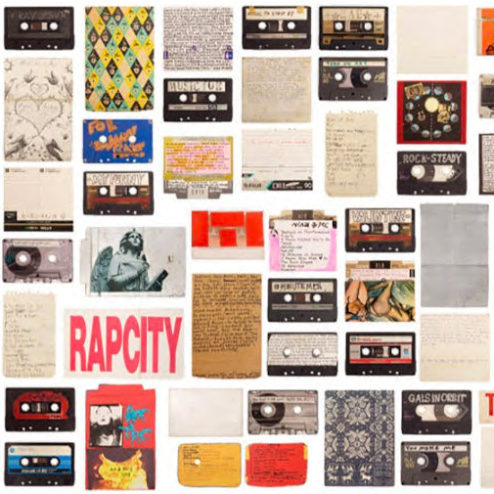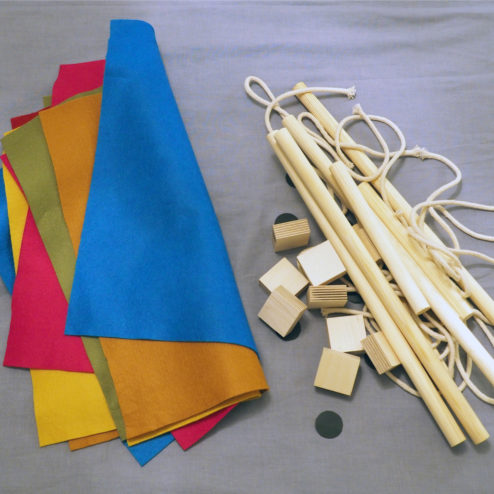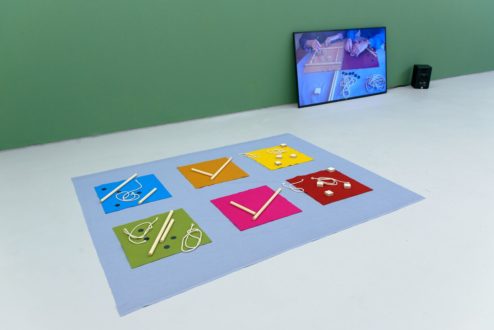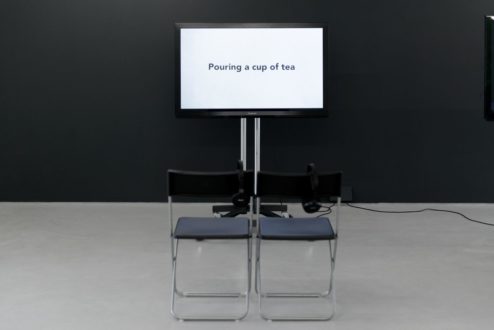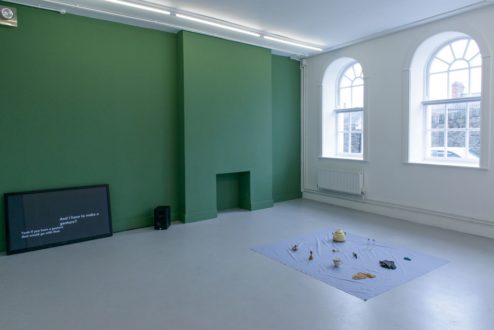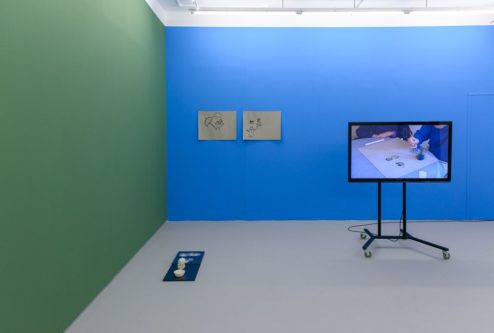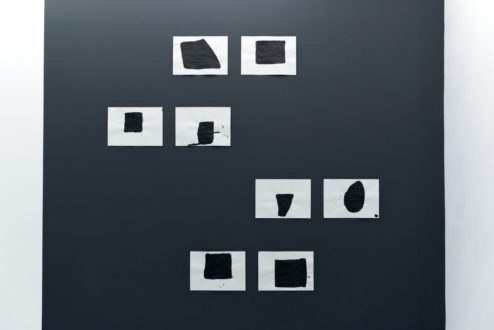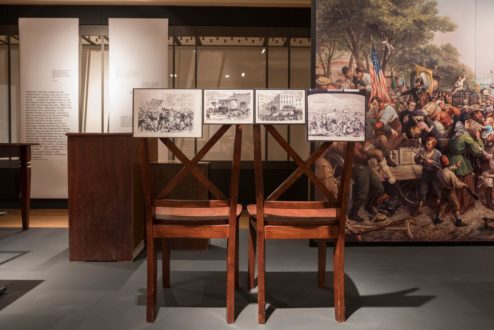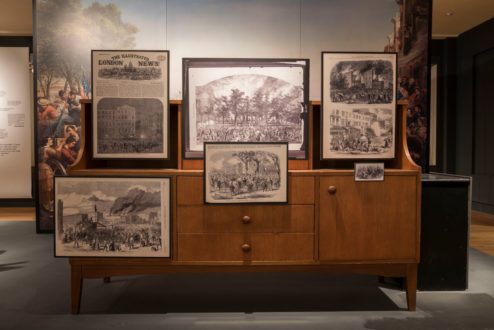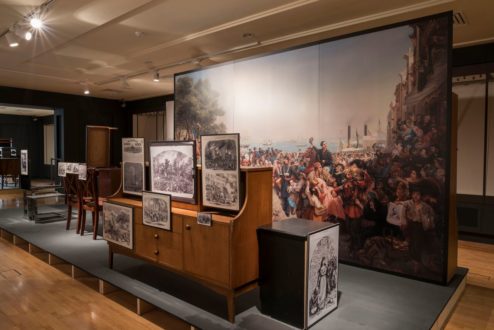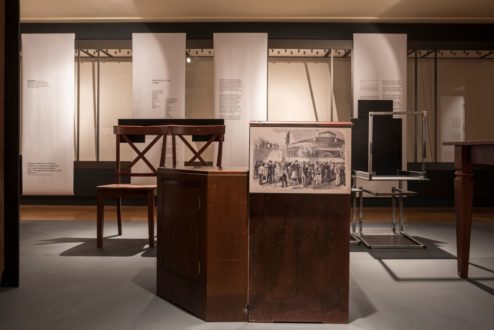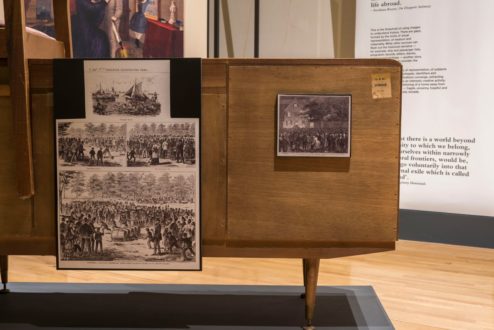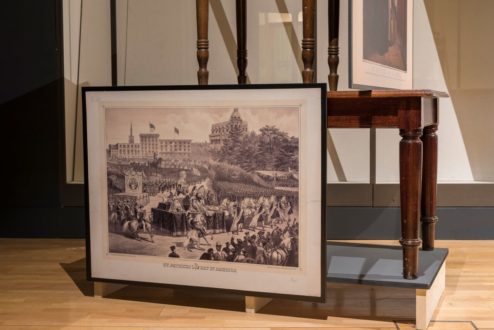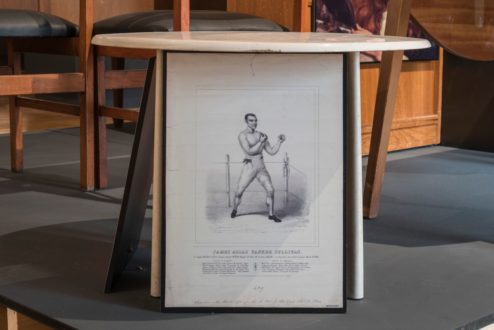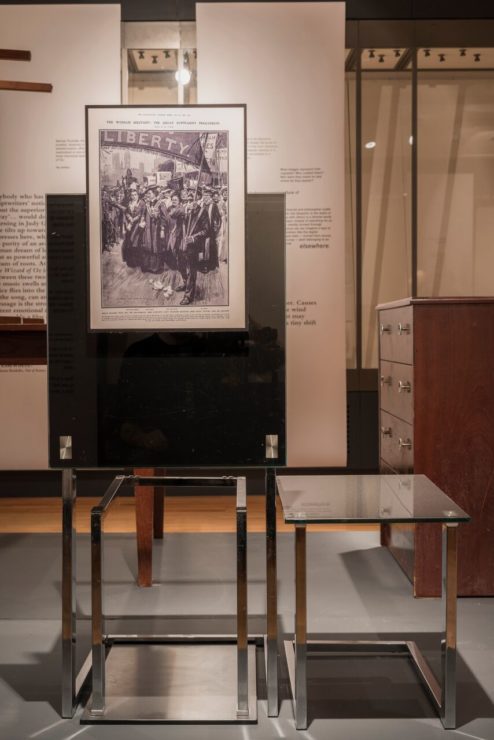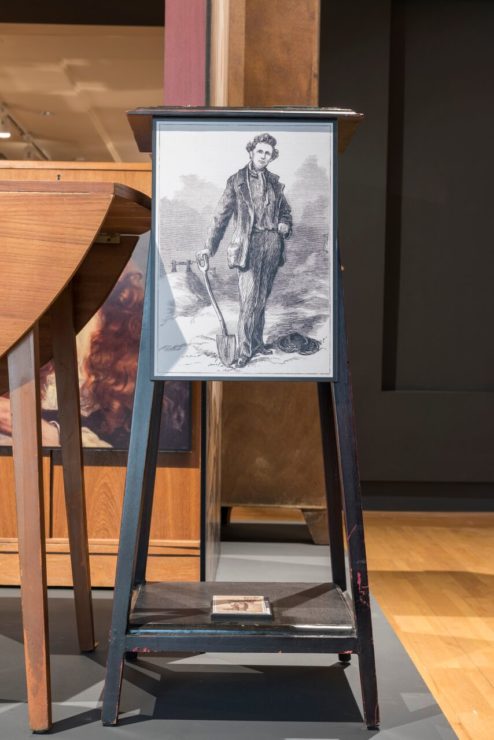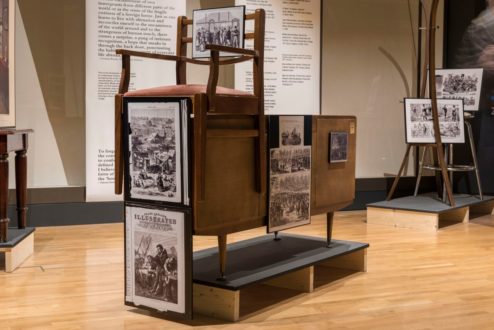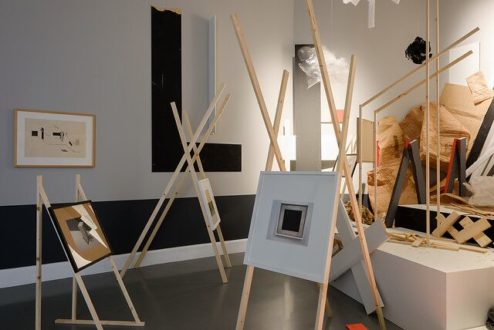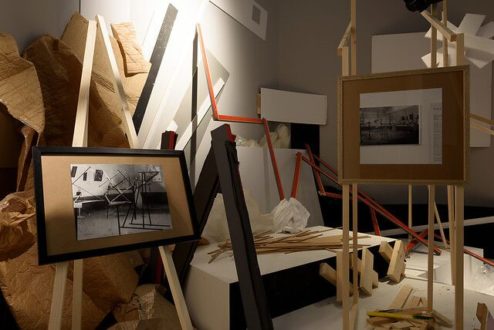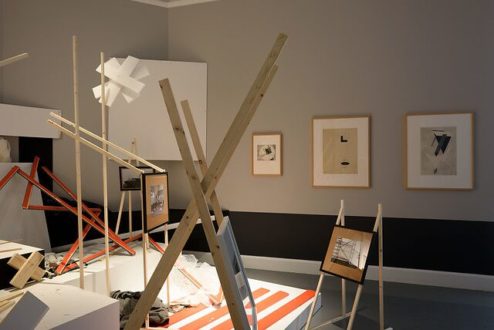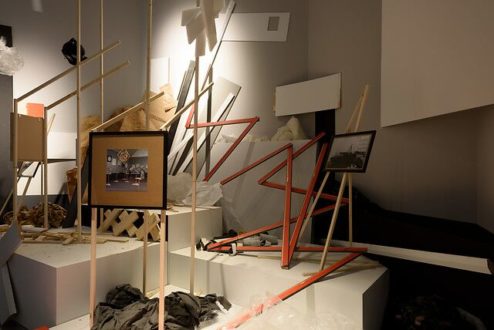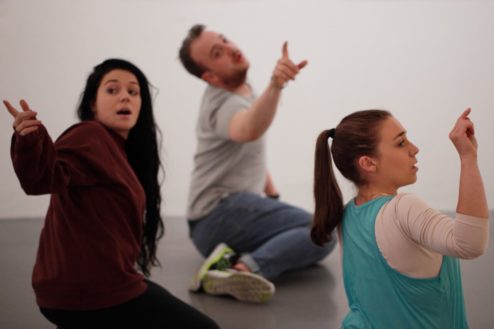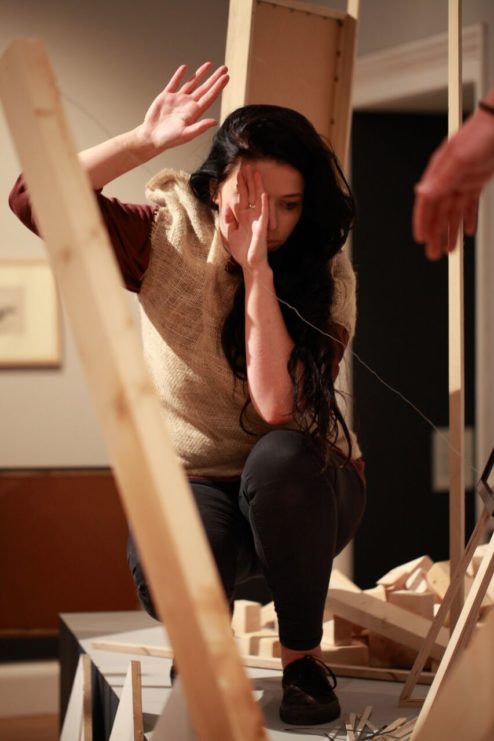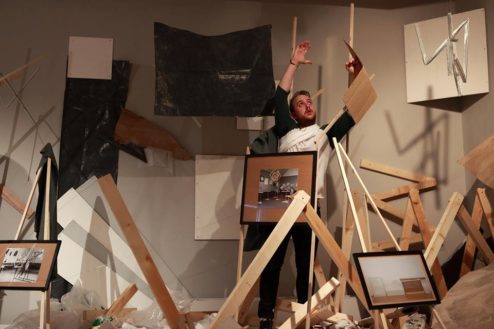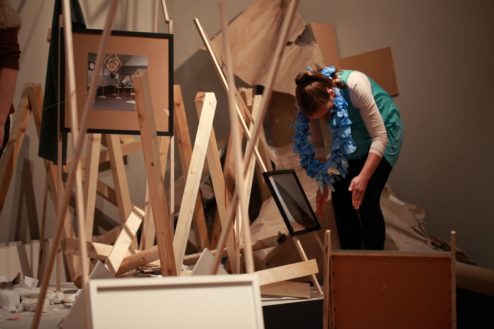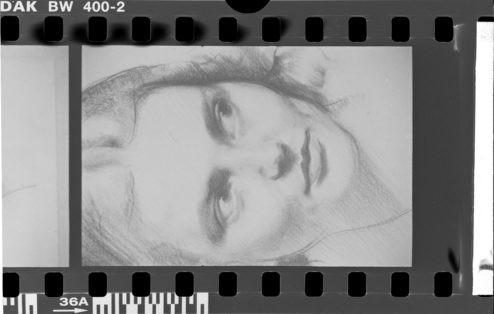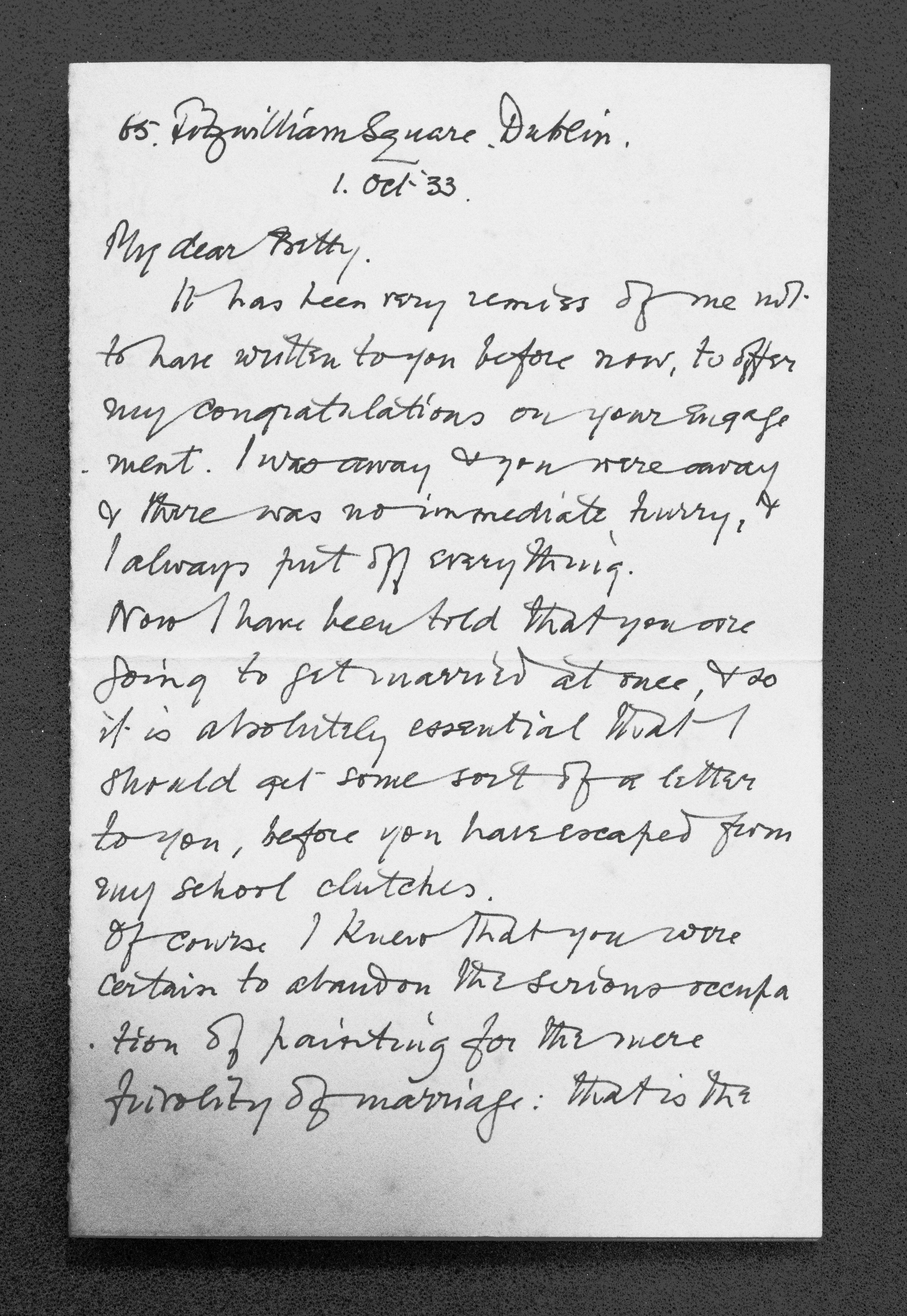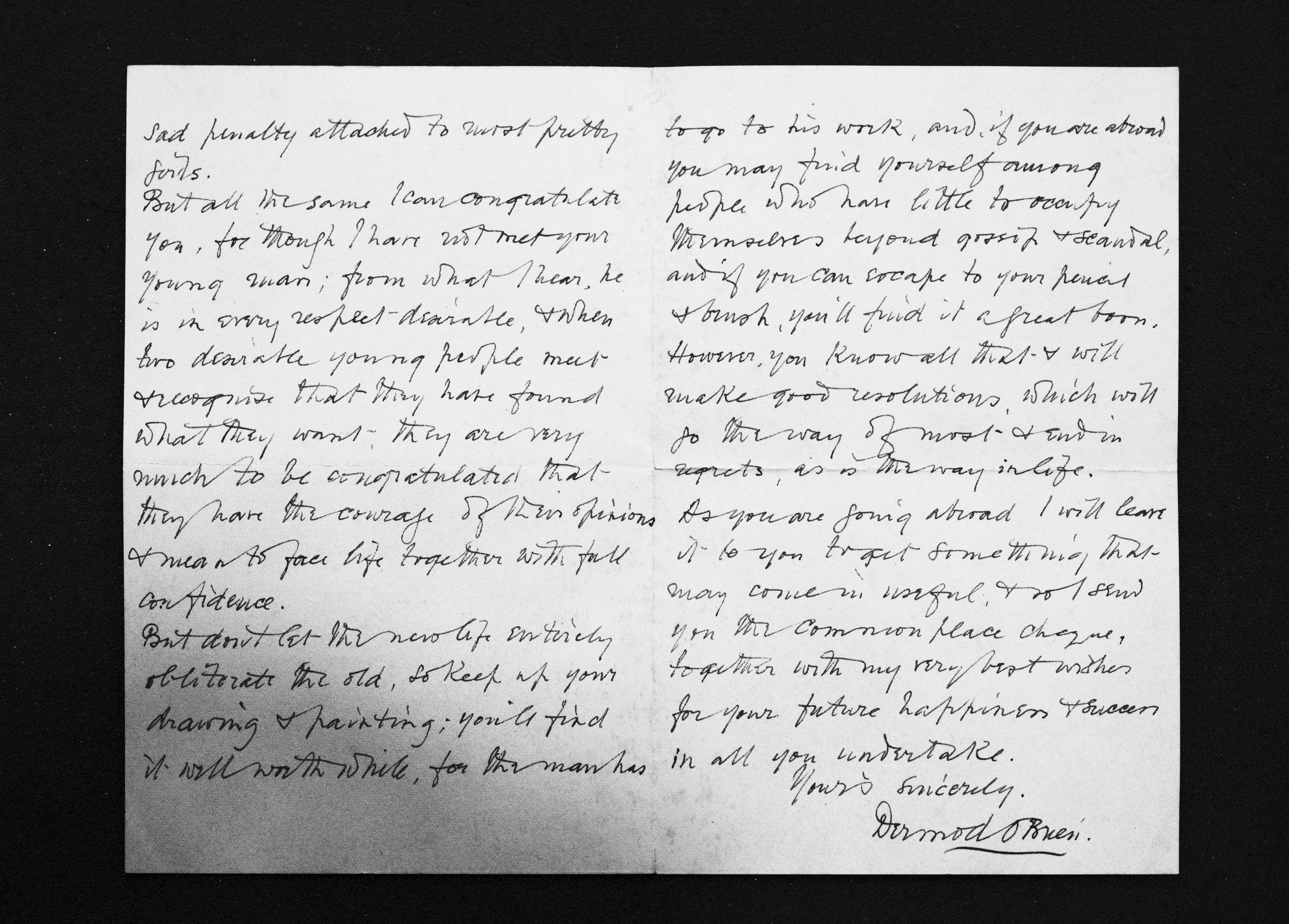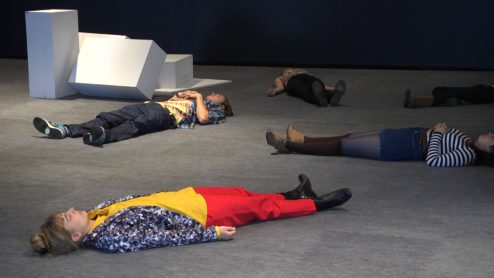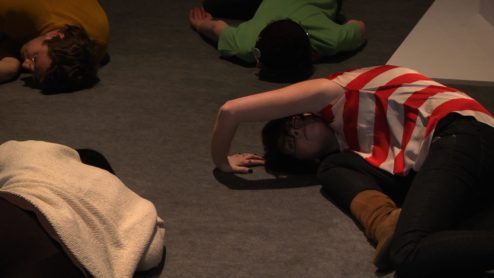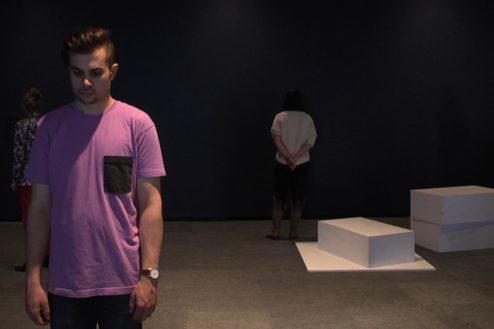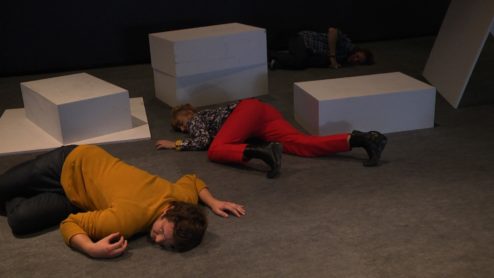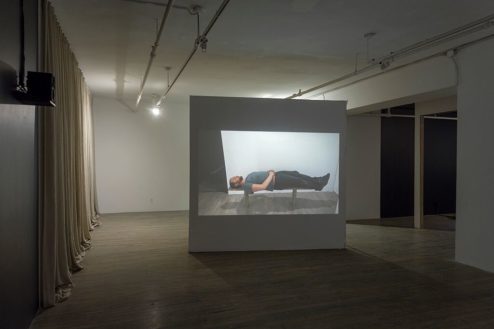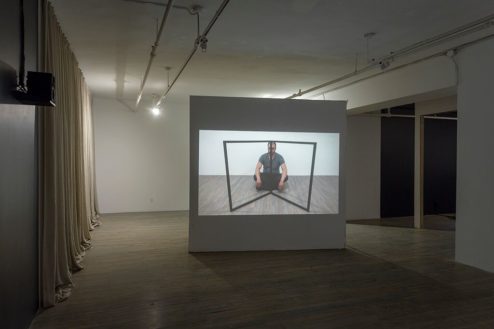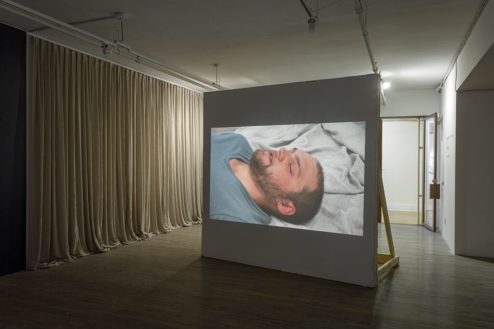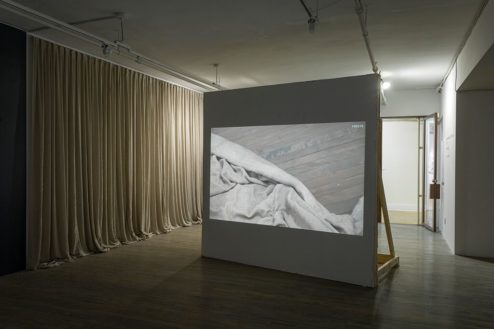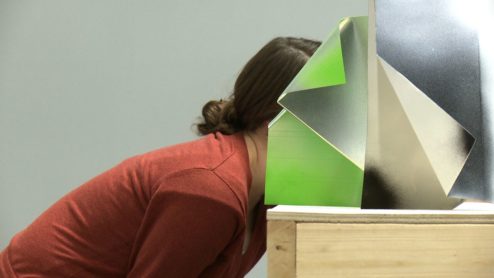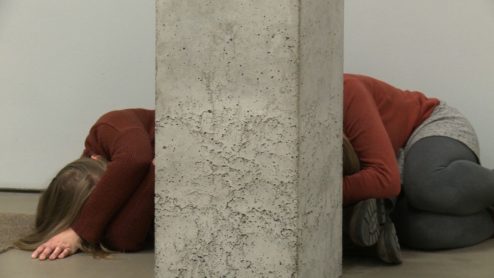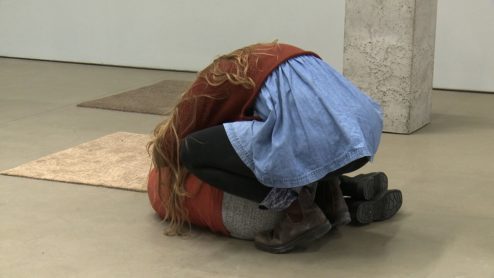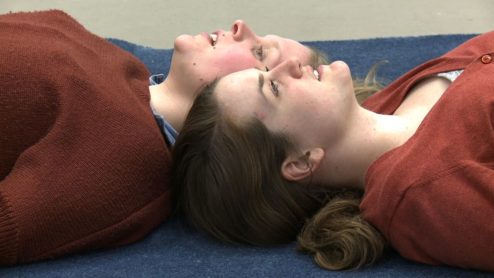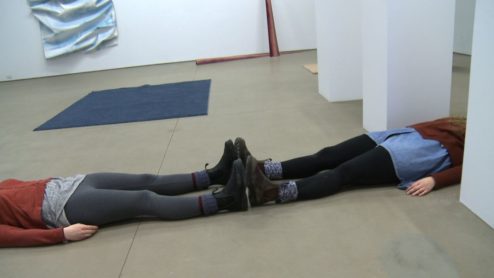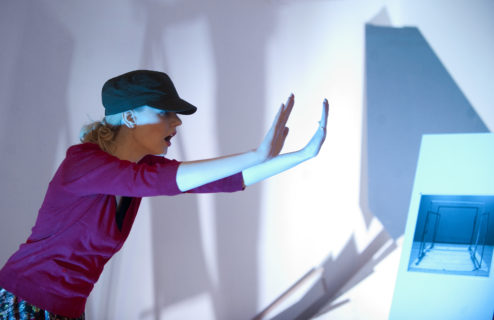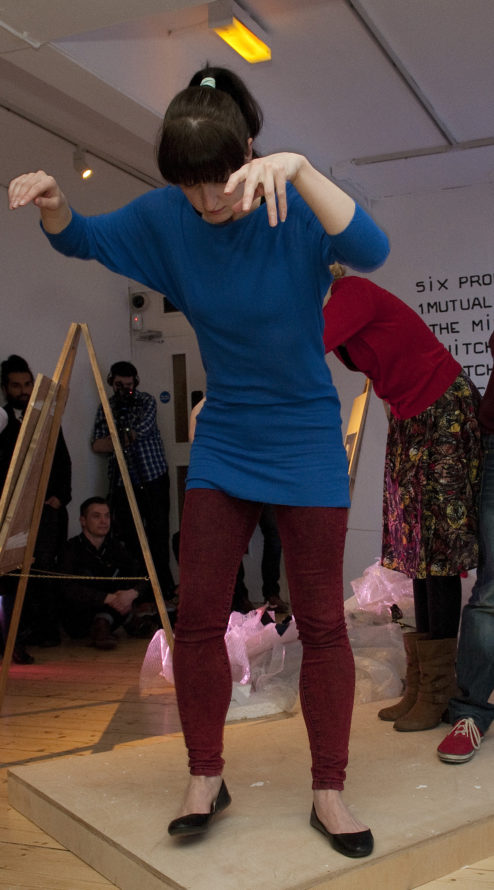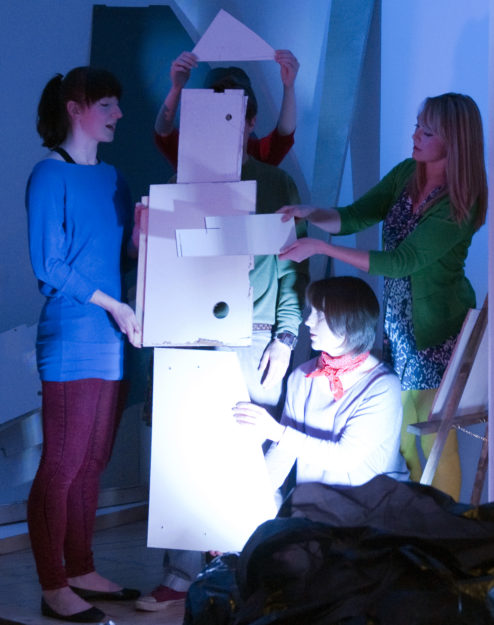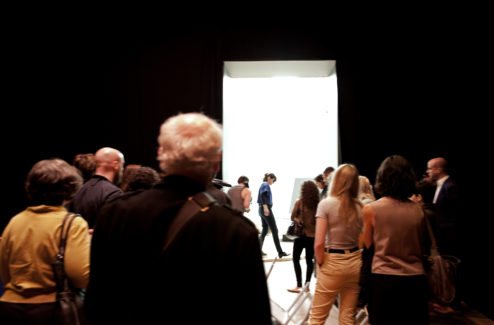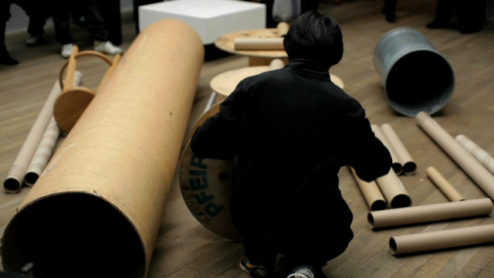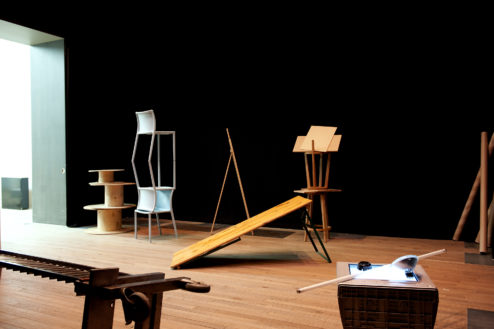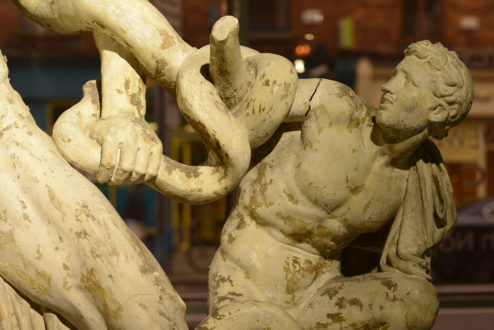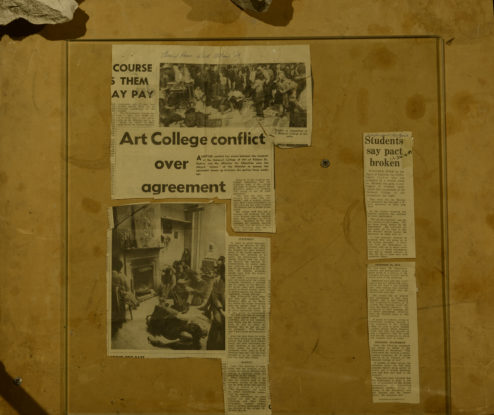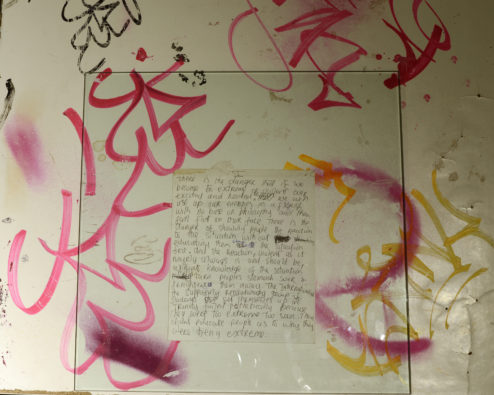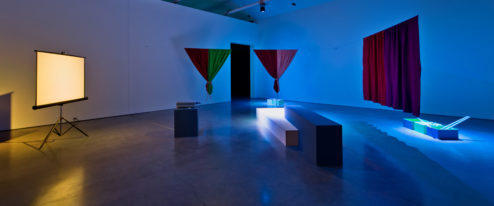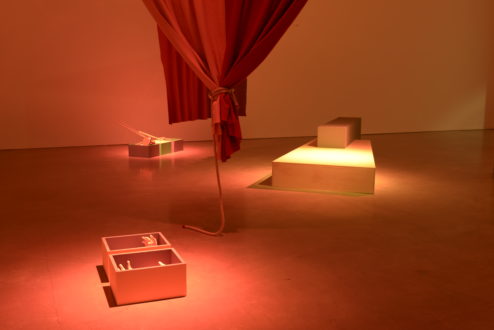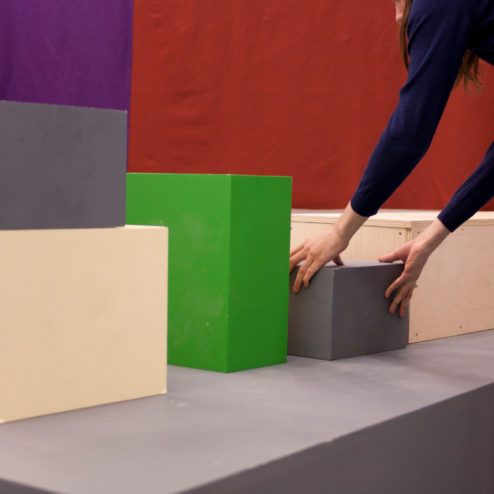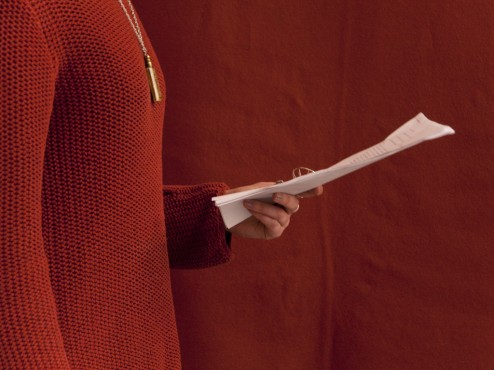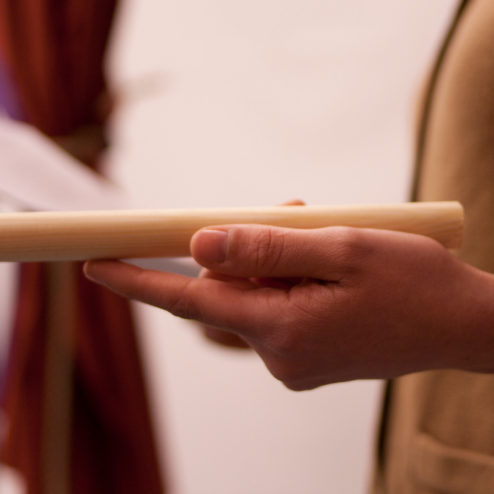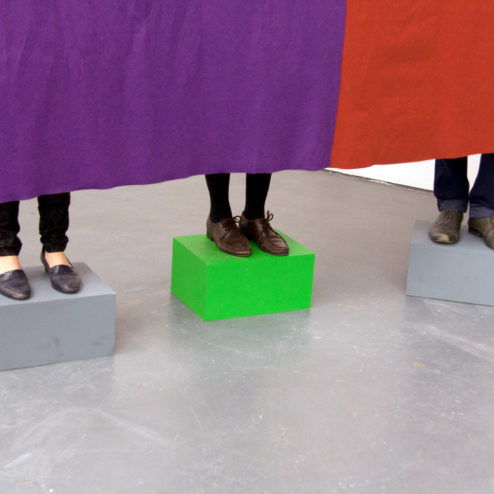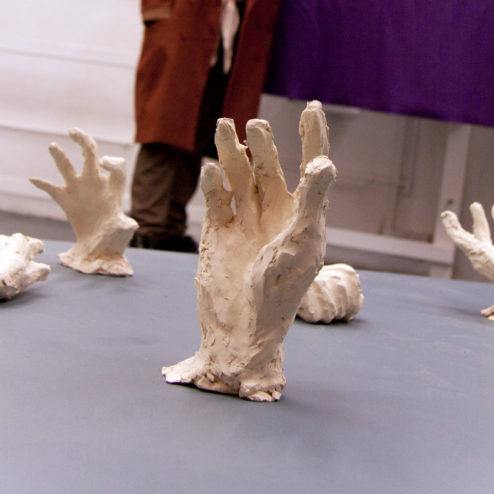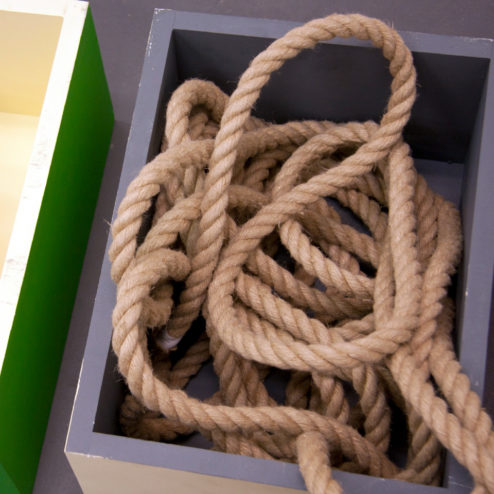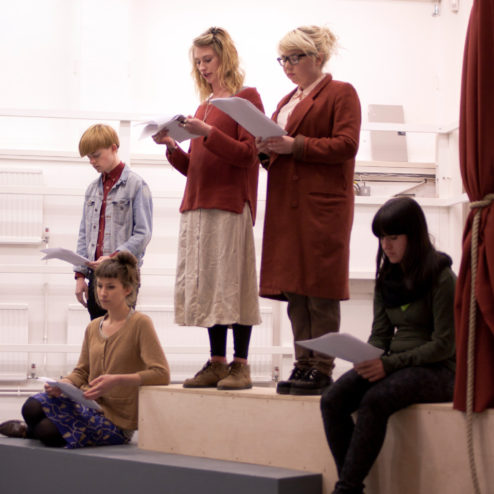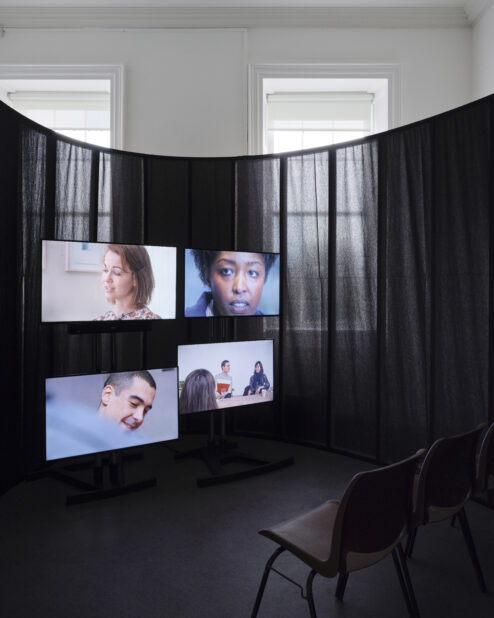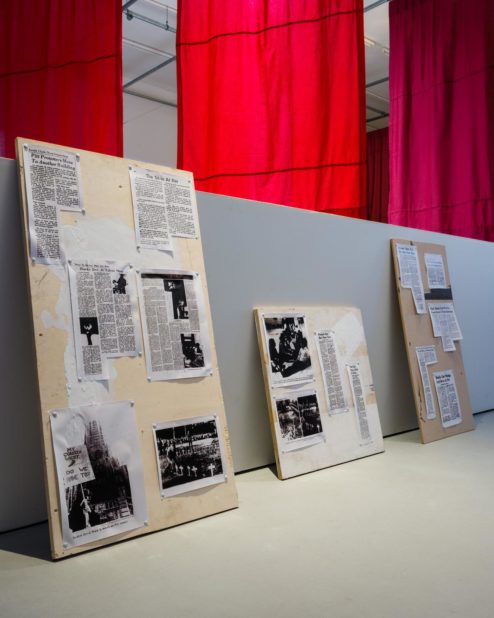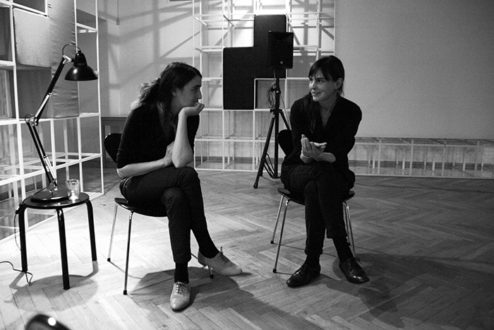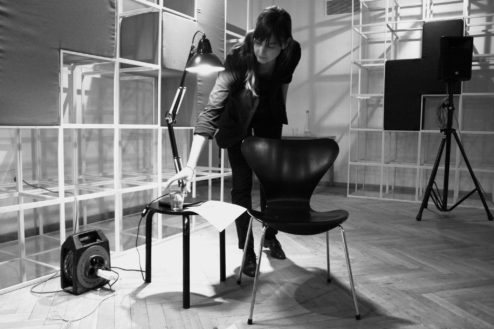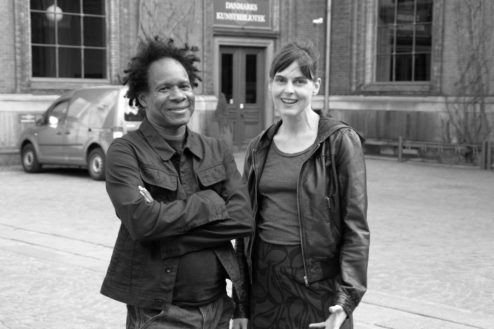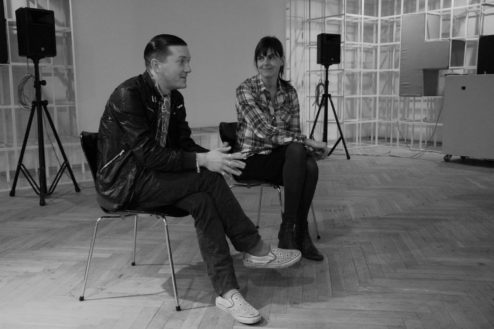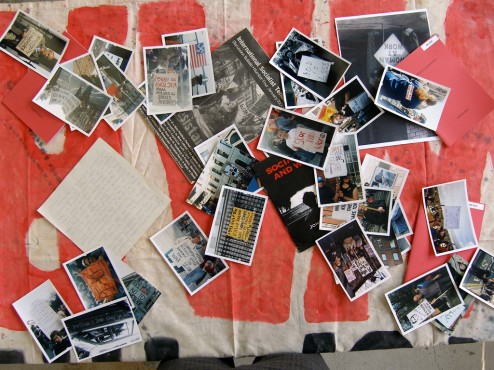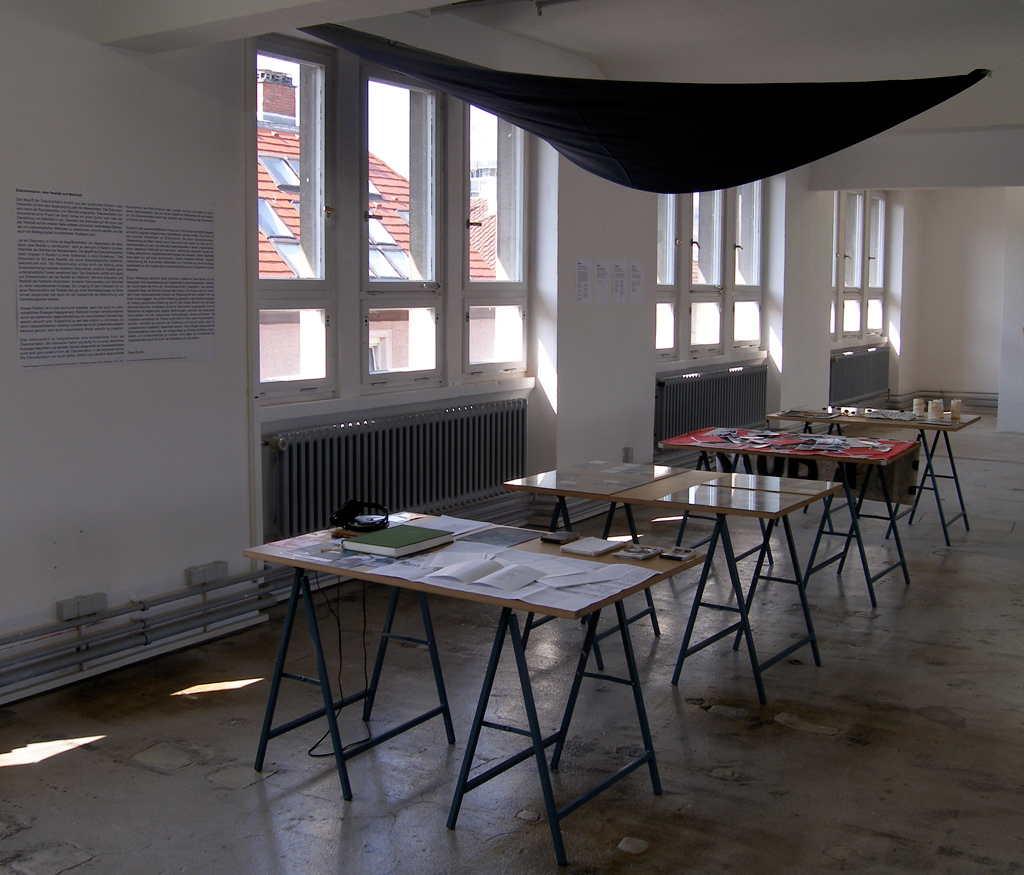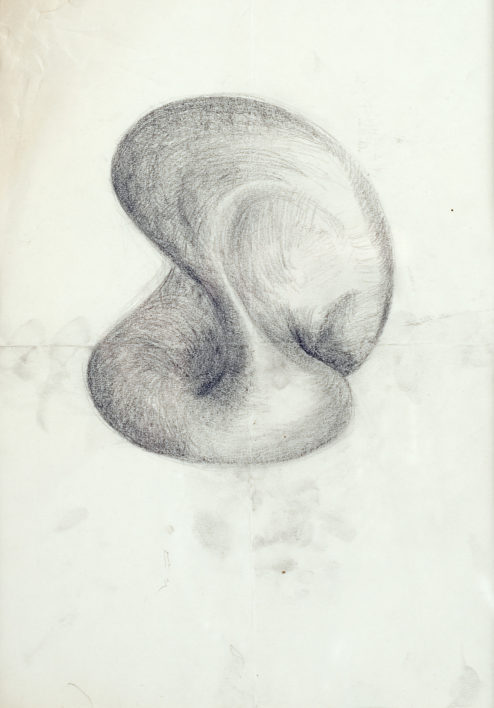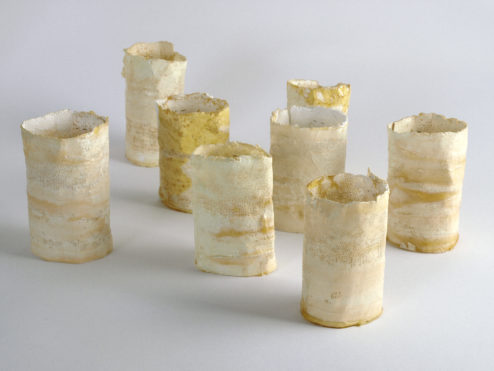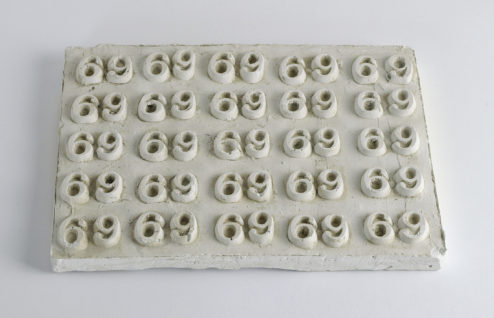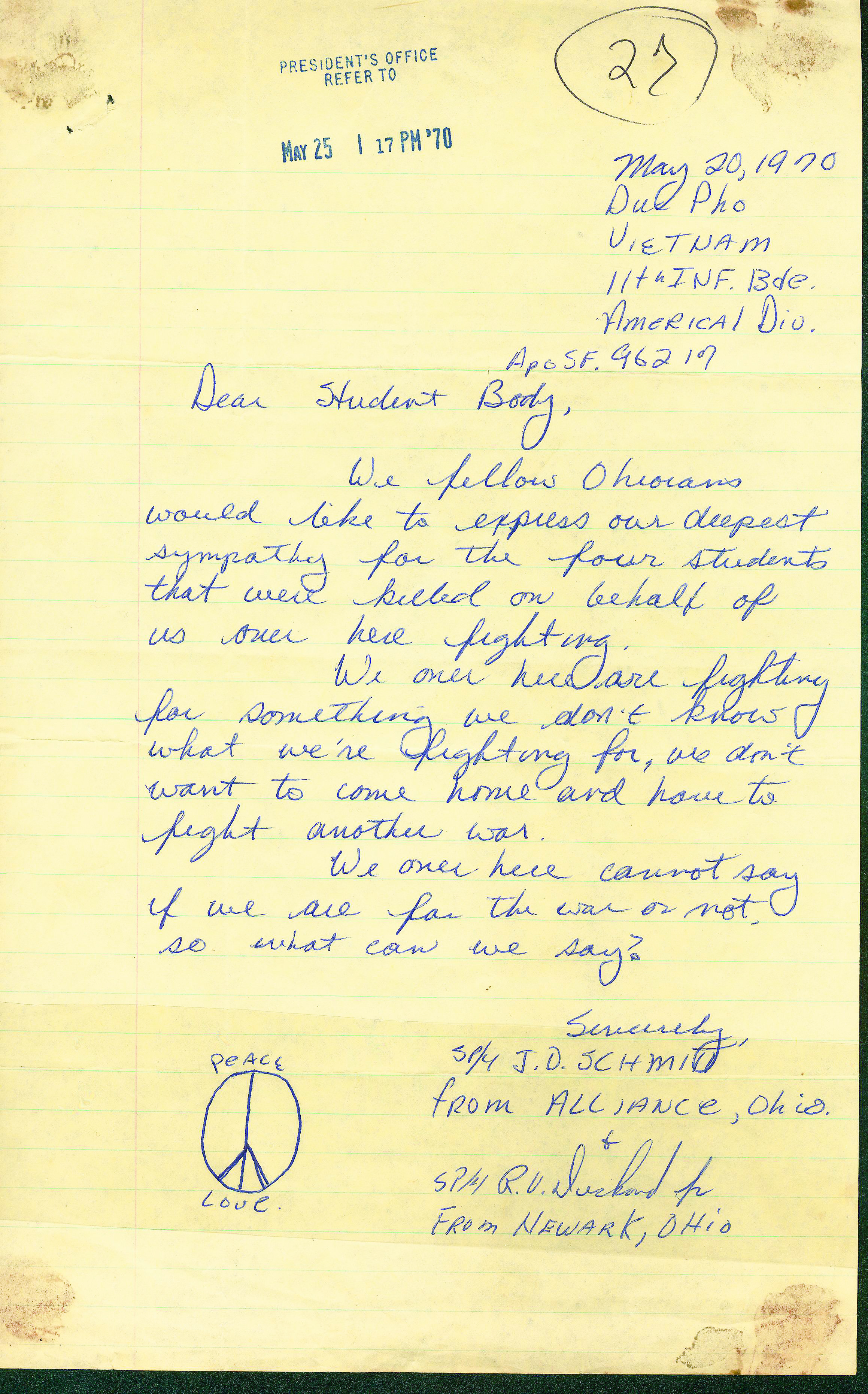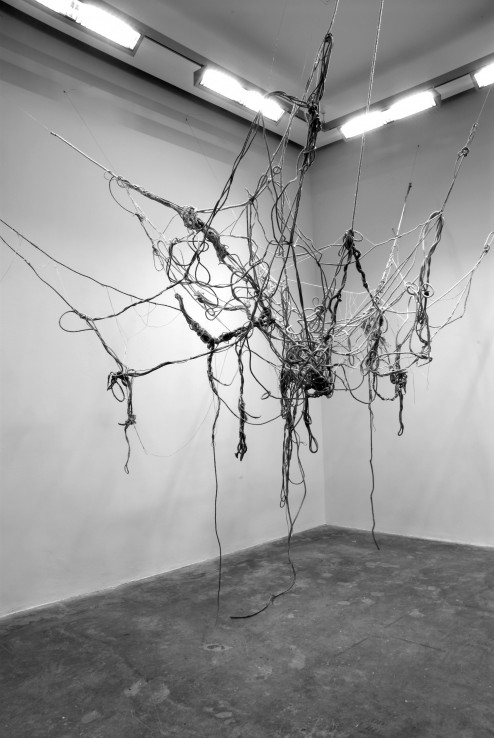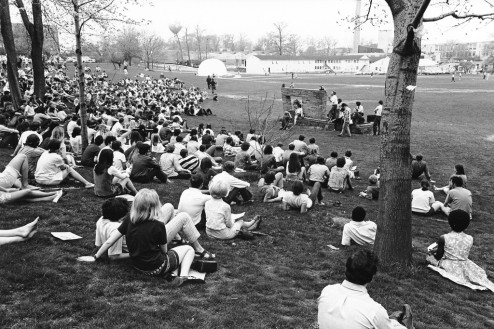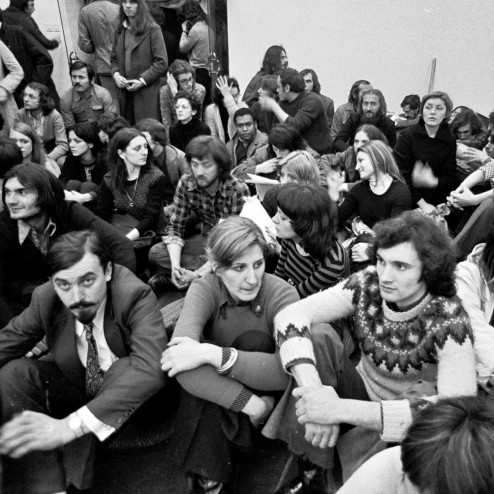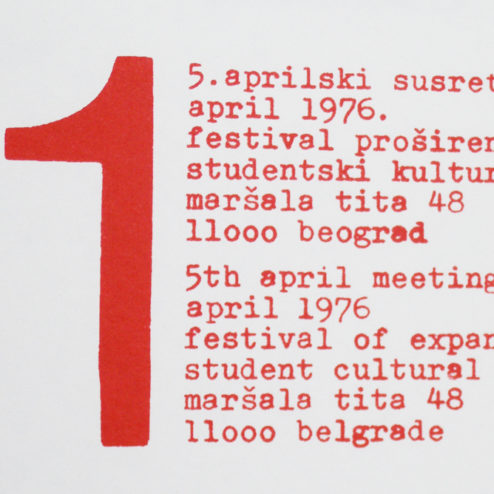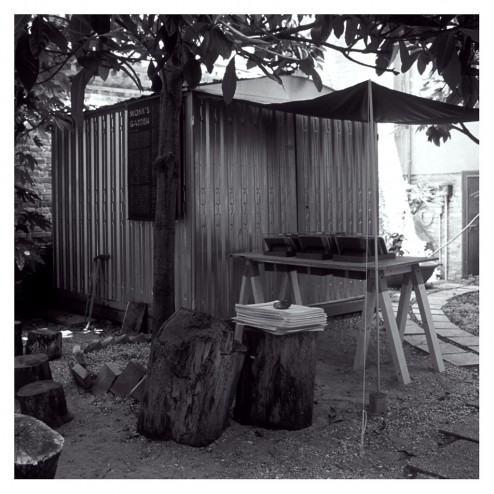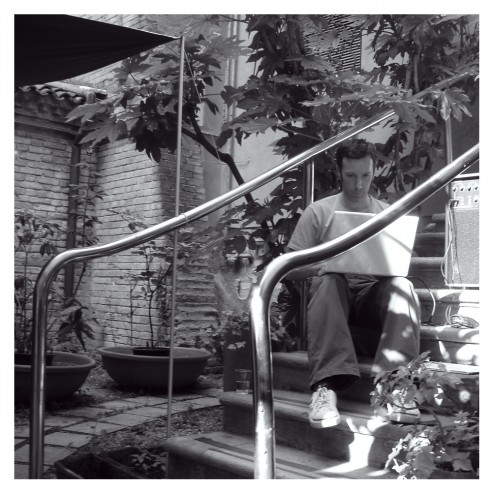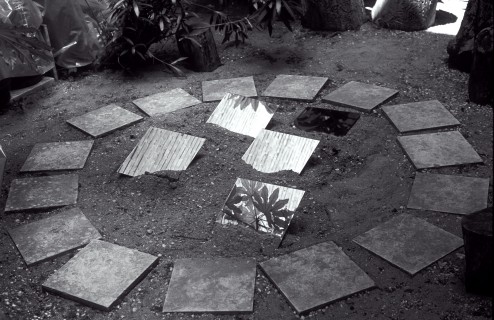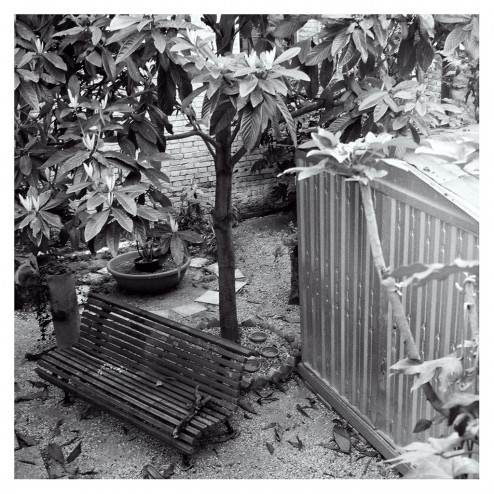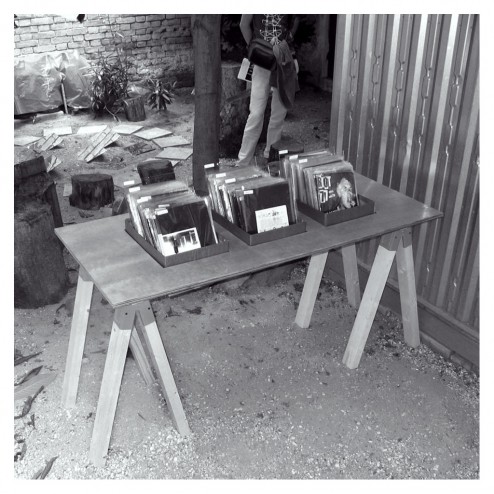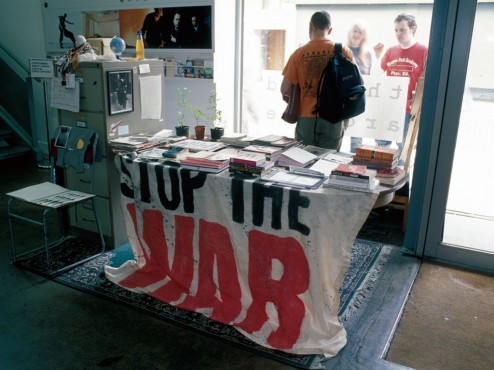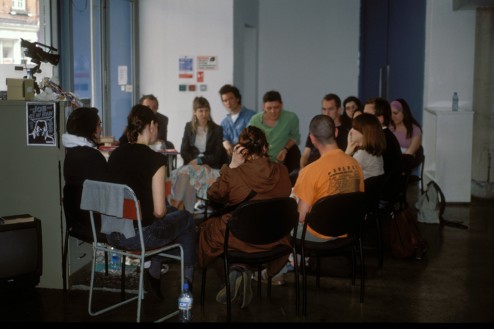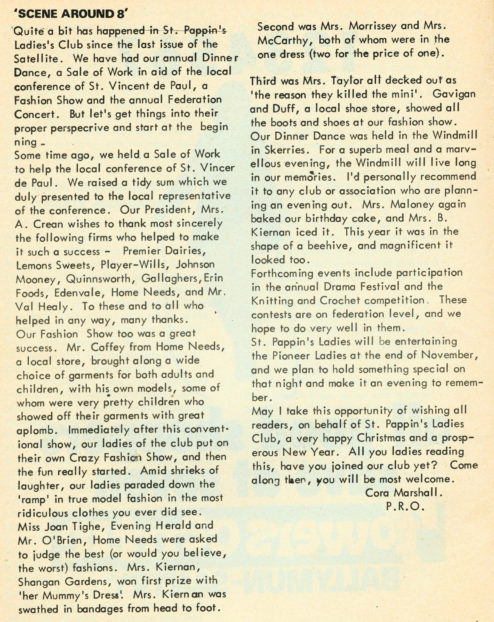About
Since 2003, Sarah Pierce has used the term The Metropolitan Complex to describe her project, characterised by forms of gathering, both historical examples and those she initiates. The processes of research and presentation that she undertakes demonstrate a broad understanding of cultural work and a continual renegotiation of the terms for making art, the potential for dissent, and self-determination. Pierce works with installation, performance, archives, talks and papers, often opening these up to the personal and the incidental in ways that challenge received histories and accepted forms. Her interests include radical pedagogies and student work, art historical legacies and figures such as El Lissitzky, August Rodin, and Eva Hesse, and theories of community and love founded in Maurice Blanchot and Georges Bataille.
Pierce has a PhD in Curatorial/Knowledge from Goldsmiths College (2014) and an MFA from the College of Architecture, Art, and Planning at Cornell University (1994), and she is a past participant of the Whitney Museum Independent Study Program in New York (1995). She is a past Member and Chair of the Board at Project Arts Centre in Dublin (2010-2020). She teaches in the School of Visual Culture at the National College of Art and Design in Dublin.
Promotional VIDEOS | Scene of the Myth (with Rike Frank at IMMA); Shelter Bread & Freedom (film by Louis Haugh); Pathos of Distance (with Donal Maguire at the Center for the Study of Irish Art, NGI); Gag (introduction by Sarah Glennie with Catherine Morris at IMMA); Artwork in the Third Person (Lyon Biennale).
SELECT PUBLICATIONS | No Title, co-edited with Sara Greavu, published by CCA Derry. Designed by Kaisa Lassinaro with contributions by T.J. Clark, Karl Homqvist, Mason Leaver-Yap, and Claire Potter; and Sketches of Universal History Compiled from Several Authors, edited by Rike Frank and published by Book Works, London. Designed by Peter Maybury with essays by Melissa Gronlund, Tom Holert, Barbara Clausen, Declan Long, and Padraíc E. Moore. Pierce regularly writes and has chapters in a many publications, most recently, Of(f) Our Times: The Aftermath of the Ephemeral and other Curatorial Anachronics (2019) Eds. Rike Frank and Beatrice von Bismarck.
CONTACT | Studio
MOST EXHIBITIONS | since 2003
2024 | Scene of the Myth (tour) Galerie für Zeitgenössische Kunst, Leipzig and John Hansard Gallery, South Hampton. Curated by Rike Frank and the European Kunsthalle.
2023 | Scene of the Myth, Irish Museum of Modern Art, Dublin. Curated by Rike Frank and the European Kunsthalle.
2022 | Mountain Language, Galway Arts Centre, Galway. Curated by Megs Morley.
2021 | Wayward Eye, Temple Bar Gallery & Studios, Dublin; Fade to Black, Black Church Print Studios at the Library Project; Ghosts from the Recent Past, Irish Museum of Modern Art, Dublin
2020 | One Love Leads To Another, special project for the Dublin Art Book Fair, Temple Bar Gallery and Studios, Dublin with Tammy Rae Carland and Kathy Slade; From the Studios, Temple Bar Gallery & Studios, Dublin.
2019 | No Place No Time, Audain Gallery at Simon Fraser University, with the School of Contemporary Art’s 3rd year BFA students. Organised by Kathy Slade; Still Beginning, Day Without Art, screening hosted by The Metropolitan Complex in cooperation with Visual AIDS, Studio 11 Temple Bar Gallery an Studios; Encounters along a practice: a gathering in celebration of Beatrice von Bismarck, Hochschule für Grafik und Buchkunst Academy of Fine Arts Leipzig (HGB).
2018 | Landis Museum, Glasgow International, UK and CCA Derry, Northern Ireland
2017 | Sarah Pierce/No Title, CCA Derry, Northern Ireland (solo); To Seminar, BAK Utrecht NL; It’s Very New School, Rua Red, Tallaght; Appropriate Contact (performance) in The Wild, Project Art Centre, Dublin
2016 | Foaming at the Mouth, Nancy Hands Dublin; We are the Center, Bard College, Annandale-on-Hudson US; We Are the (Epi)Center, P!, New York; Museum of Our August Destiny, St Carthage Hall, Lismore; Still the Barbarians, EVA International, Limerick; Rosebud, Library Project, Dublin; Remote Choreography (performance) for How Institutions Think, LUMA Foundation Arles FR
2015 | Positions #2, Van Abbemuseum, Eindhoven NL; Sarah Pierce: Pathos of Distance, National Gallery of Ireland, Dublin (solo); I Rebel therefore We Exist (solo) 3-part lecture-performance at Project Arts Centre, Dublin; El Lissitzky: The Artist and the State, Irish Museum of Modern Art, Dublin
2014 | Pull Bite Rally, NCAD Gallery Dublin; Bed: A shimmering, Galerie Krobath, Vienna AT; Gracelands Irish Museum of Modern Art, Dublin; Lost Illusions/Illusions Perdue, Walter Phillips Gallery, Banff CA, Mercer Union, Toronto CA and SBC Gallerie, Montreal CA
2013 | Some Woolly Buzz, Publication Studio, Vancouver CA; False Memory Syndrome, Temple Bar Gallery, Dublin; Mental Furniture Industry, Flat Time House, London UK; Anguish and Enthusiasm, Cornerhouse, Manchester UK; Monogamy, CCS Galleries, Bard College, Annandale-on-Hudson US
2012 | Something to Do Something to Say, VOX, Montreal CA; I Proclaim, You Proclaim, We Proclaim, Stroom, Den Haag NL; Towards a Newer Laocoön, NCAD Gallery, Dublin; Gracelands: Circling the Square, The Milk Market, Limerick; Anti-establishment, CCS Hessel Museum, Bard College, Annandale-on-Hudson US; After the Future, Eva International, Limerick; Sarah Pierce, The Artist Talks, The Showroom, London UK (solo); ached grew print jot, The Drawing Project, Dun Laoghaire
2011 | A Terrible Beauty is Born, 11th Lyon Biennale, Lyon FR; Our Day Will Come, Tasmanian School of Art, Hobart AU; Gracelands: Substance Abuse, Mimetic House, Co Leitrim; I’m Searching for Field Character, MassMOCA, North Adams US; Neighbo(u)rhood, Mattress Factory, Pittsburgh US; Push and Pull, Tate Modern, London UK; Appeal for Alternatives, Schmela Haus, Stiftung Kunstsammlung Nordhein Westfalen K21+K20, Düsseldorf DE; Research Programme, Kunsthal Charlottenborg, Copenhagen DK; We Are Grammar, Pratt Manhattan Gallery, New York US
2010 | Les rendez-vous du Forum: Fun Palace, Centre Pompidou, Paris FR; Push and Pull, MUMOK, Vienna AT; Sinopale 3, International Sinop Biennale TK; Gracelands: I am Spartacus, The Model Sligo, Co Leitrim; Invisible Publics, Townhouse Gallery, Cairo EG; The Future of Art, Durst Family Humanities Building, Purchase College SUNY, Westchester Co. US; From Dusk Till Dawn, Van Abbemuseum, Eindhoven NL; Into the Unknown, Ludlow 38, New York
2009 | The Archival Fourth Dimension, Afterall online, www.afterall.org; If I Can’t Dance Edition III Masquerade, Project Arts Centre, Dublin; If I Can’t Dance Edition III Masquerade, Sala rekalde, Bilbao ES; Curator Curator #5, Afterall, Everything is Different in the End, HISK/Higher Institute for Fine Arts, Ghent, NL; Friends of the Divided Mind, Curating Contemporary Art Masters Exhibition, RCA, London UK; All That is Solid, MuHKA, City of Mechelen BE; Sarah Pierce and Kevin Atherton: In Two Minds, FOUR, Dublin; Coalesce Happenstance, SMART Projects, Amsterdam NL
2008 | Nameless Science, Apex, New York US; A thing of beauty, colour and love, FOUR gallery, Dublin (solo); If I Can’t Dance Tonight, Frascati, Amsterdam NL; Gracelands, Mimetic House, Co Leitrim; Feminist Legacies, de Appel, Amsterdam NL; Nought to Sixty, ICA London UK (solo); Underground, Dublin Fringe Festival, Dublin; Unfair Fair, Loto Arte, Rome IT
2007 | Feminist Legacies and Potentials In Contemporary Art Practice, MuHKA, Antwerp BE; When Art (or In what regard?), Socrates Sculpture Park, New York US; Das offene Ende, Stuttgart Künstlerhaus DE; Left Pop, 2nd Moscow Biennale, Moscow Museum of Modern Art, Moscow RU
2006 | Enthusiasm!, four radio progammes on 104.4 Resonance fm for Frieze special projects, co-curated with Grant Watson; Our Day Will Come, temporarycontemporary, Zoo Art Fair, London UK; The Meaning of Greatness, Project, Dublin (solo); Test Pieces and Blend-in Moments, Galariji SKC, Belgrade SE; Ireland at Venice, Louis Glucksman Gallery, Cork; Three friends, rolling billboard project, euroPART Vienna AT
2005 | Ireland at Venice, Irish National Pavilion, 51st Venice Biennale IT; Coalesce/Remix, Redux, London UK; Cork Caucus, National Sculpture Factory, Cork; Caged Archive, in Mark O’Kelly In fashion, Limerick City Gallery, Co. Limerick; Meanwhile in another place... Sala rekalde, Bilbao ES
2004 | Tracer, Witte de With/TENT, Rotterdam NL; Romantic Detachment, PS1 MoMA, New York US; Red Archive, Project Arts Centre, Dublin; Country, Equrna Gallery, Ljubljana SL
2003 | Artists/Groups, Project Arts Centre, Dublin; Sited in the Dublin Fringe Festival, Irish Museum of Modern Art, Dublin; Affinity Archive, Broadstone Studios, Dublin; Definitively provisional, Whitechapel Project Room, London; Permaculture, Project Arts Centre, Dublin
Scene of the Myth
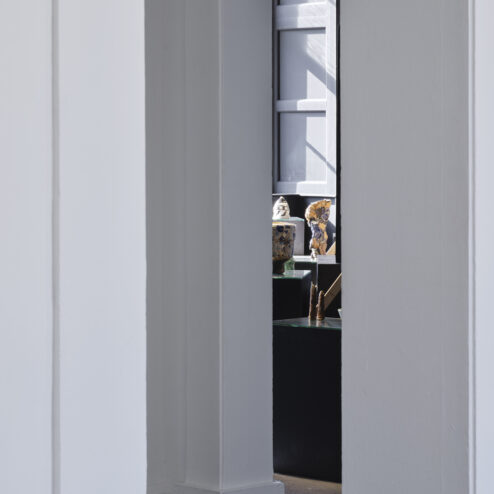
2023 | Twelve works presented at the Irish Museum of Modern Art, guest curated by Rike Frank and the European Kunsthalle, with live works performed by Charlotte van Braam , Julie Landers , Nada Yehia , Emily Miller , Manuel McCarthy Valderrama , Méabh McKenna , Sarah Joan Kelly and Paola Catizone | 23 March – 03 September 2023.
Sarah Pierce: Scene of the Myth, consists of performances, videos, installations, and archives. Borne out of sticky relationships between the narratives we reproduce and those we wish to leave behind, Scene of the Myth asks what it means to gather, reflect, and act in community.
The title of the show stems from one of Pierce’s essays in which the artist describes social infrastructures, such as academies and museums, as moments through which the narratives and conventions of a historical past are re-constituted in the present. The scene of the myth is not an actual location; it is an occasion where knowledges, both inherited and invented, come into play. An exhibition is one such occasion.
A key to the curatorial work is the potential for open doorways and unblocked windows to mark out specific “scenes” in and around Pierce’s practice: Institutes and Protests, Legacies and Exercises, Communities and Migrations.
The exhibition features a significant selection of projects with students, who appear as performers, demonstrators, and interlocutors, including An Artwork in the Third Person (2009), a set of interviews made with the Dutch Art Institute; Campus (2011), a performance that mirrors communal acts such as teaching, learning, and political protest; and The Square (2017), an experimental “play without a script” that uses Bertolt Brecht’s Lehrstück – or learning play – as a starting point.
The show brings to the fore this ongoing and discerning interest in community’s tenuous and unavowable bonds, whether it is the community of dementia in No Title (2017), the community of diaspora in Pathos of Distance (2015), or the community of translation in The Question Would Be The Answer To The Question, Are You Happy? (2009-12).
Shelter Bread & Freedom
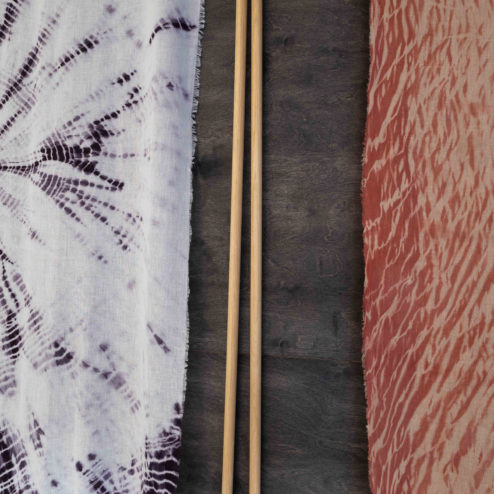
2021 | Banners (hand-dyed with copper, oak rods and rope); Centre banner (digital print with oak rods and rope) 250 x 270cm; Pamphlet and public reading. Commissioned by Temple Bar Gallery & Studios for the exhibition Wayward Eye 30 September – 13 November 2021.
This artwork focuses on a specific structure, the concrete shelter in Phoenix Park, to describe sustained connections to public space. The shelter is the prompt for an expansive artwork made of a pamphlet, with research and texts by Donna Rose and Grace O’Boyle; a set of banners, scaled to the shelter’s interior, sewn by Aoife McLaughlin and dyed by Clíona McLoughlin; and a multi-lingual group of readers who performed in the shelter on 10 October 2021. Each marks the shelter as a site of radical communality, study and care. The centre banner depicts a German Waldschule in 1904, a self-reflexive moment of protest and solidarity that captures our own awareness of ourselves as historical subjects of the pandemic.
For Shelter Bread & Freedom: Remote Readings, a community of readers made of individuals who have migrated to Dublin presented short, chosen texts read aloud in their home languages, including: Arabic, Bhojpuri, Creole, Danish, Greek, Hindi, Kinyarwanda, Norwegian, Polish, Slovene, Spanish, Swiss German, Telugu, Vietnamese. The texts included personal letters, diaries, books, manifestoes, poems, lyrics, and other matter. The readings were not translated and the audience was invited to gather and listen, without (necessarily) understanding the languages spoken every day, by people who live in Dublin.
Readers included: Anh Ngo, Anistah Jugnarain, Devi Chakouree, Embla Müller, Jaime Luján Alarcón, Laura Twagirayezu, Maria Maarbjerg, Nishta Sarathee, Simone Stolz, Stavi Mitsu, Tuqa Al-Sarraj, Visnou Chakouree, Žiga Kelenc, Zuzanna Przybyla. Special thanks to Nasser Aidara.
READ | Shelter Bread & Freedom pamphlet.
One Love Leads to Another
2020 | Archive display and video for the Dublin Art Book Fair 2020. Temple Bar Gallery & Studios 23 November – 06 December 2020. Image: Tammy Rae Carland, One Love Leads to Another (detail).
Artist Sarah Pierce invited artists Tammy Rae Carland and Kathy Slade to display selections from their personal archives related to zine culture and underground publishing.
VIDEO | One Love Leads to Another: Methodologies, Legacies, and Self-determinations, a conversation between three artists.
Borrowing the title from a 2008 artwork by Carland, One Love Leads to Another presents this material in Temple Bar Gallery + Studios’ gallery window and as part of a video documenting a conversation between Carland, Slade and Pierce. Road tripping, mix tapes, punk rock and self-publishing emerge as methodologies – for self-determination and for disseminating community and desire across generations.
Sarah Pierce works with installation, performance, archives, talks and papers, often opening these up to the personal and the incidental in ways that challenge received histories and forms of making. Since 2003 she has used the term The Metropolitan Complex to describe her project, characterised by forms of gathering in historical examples and those she initiates. The processes of research and presentation that Pierce undertakes demonstrate a broad understanding of cultural work and a continual renegotiation of the terms for making art, the potential for dissent and self-determination. Sarah Pierce has a Three Year Membership Studio at Temple Bar Gallery + Studios, Dublin.
Tammy Rae Carland is an American photographer, video artist, zine editor. She is the current provost at California College of the Arts (CCA), and former co-owner of the independent lesbian music label Mr. Lady Records and Videos. Her work has been published, screened, and exhibited in galleries and museums around the world, including in New York, Los Angeles, San Francisco, Berlin, and Sydney. Forthcoming exhibitions include New Time: Art and Feminisms in the 21st Century, UC Berkeley Art Museum and Pacific Film Archive, California (2021).
Kathy Slade is a Canadian artist, author, curator, editor, and publisher based in Vancouver, British Columbia. She has worked in a variety of mediums including weaving, embroidery, sound, sculpture, printed matter, film, and video, drawing upon sources ranging from cult films and punk rock music to literary classics and recent art history, feminism, technology and labour histories, and minimalist/conceptual practices. Slade’s work has been included in exhibitions at Kunstverein Braunschweig, Germany (2020); Fluc, Austria (2019) and Morris and Helen Belkin Gallery, Canada (2018).
No Title
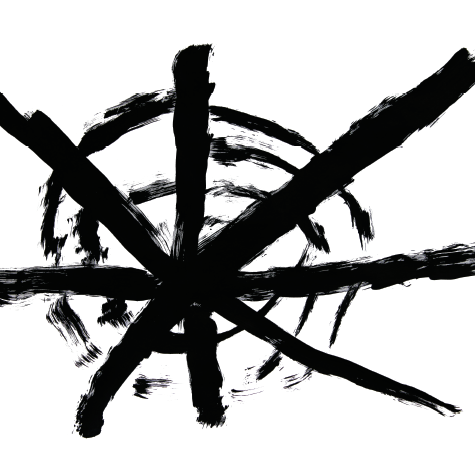
2017 | A solo exhibition commissioned by CCA Derry. Curated by Sara Greavu. Six single channel videos (exercises 1 – 6), drawings on paper (exercise 7), objects and materials.
No Title (2017) is an expansive project by Sarah Pierce that considers the condition of dementia in relation to the protocols of art making. Anchored in a series of modestly produced videos, and expanded through a portfolio of writings contributed by Sara Greavu, TJ Clark, Karl Holmqvist, Mason Leaver-Yap, Claire Potter and Jacob Wren, No Title actively questions the ethics of representation, and the limitations of clinical discourse in re-thinking subject-hood around dementia. Filming in her family home, and assisted by her niece operating camera, Pierce intimately guides her parents through a series of table-top exercises she developed, that speak of art-making, of habitude, of domesticity, but also unflinchingly of memory, of loss, and profound familial love. No Title pictures the painful process of renegotiating familial relations surrounding ‘the dementia subject’. When concepts like mother / daughter / husband are no longer reciprocated how do we relinquish our most primal bonds in the absence of terms to describe these radical new relations?
No Title emerged out a process of research in Derry where Pierce worked closely with curator Sara Greavu and artist John Beattie to develop a material vocabulary of dementia. Protocols that are repetitive, insistent, confabulating and withdrawing on the one hand, and administrative, corrective, protecting and yielding on the other, reveal dementia as a shared, dynamic condition. Each video in No Title is accompanied by a pdf that includes a script, an image inventory, and a text that responds to these protocols, expanding and attaching to other transformative narratives, including art. The currently accepted policies around care that regulate how subjects with dementia participate and appear in projects like this one, paradoxically, means they are often precluded from appearing at all, thus limiting the collective imaginary. The project’s title, No Title, refers to this absence and the many artworks where a nameable subject is missing.
No Title was originally commissioned by CCA Derry as part of the Our Neighbourhood public programme funded by Esmee Fairbairn.
The exhibition is accompanied by a book by the same name published by CCA with commissioned works by Karl Holmqvist, Mason Leaver-Yap, Claire Potter and Jacob Wren, and an essay by TJ Clark. Design by Kaisa Lassinaro.
INTRO and OUTRO | Sara Greavu and Sarah Pierce
EXERCISES | 1,2 and 7
The Square
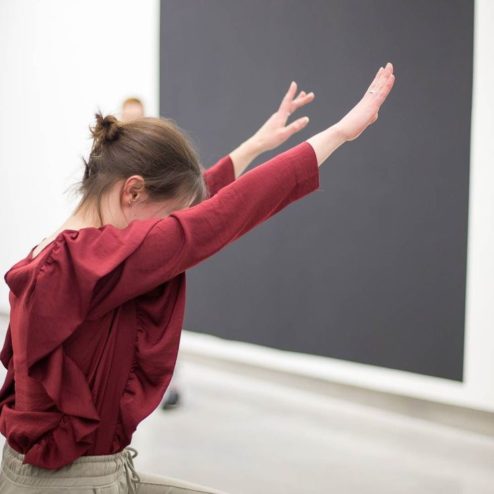
2017 | Performance and installation commissioned by Jennie Guy for It’s Very New School. Rua Red, Tallaght. Original workshops and performance at Blessington Community School, 2015. Performed by Adam Lynham-Clark, Charlie Webster, Cathal Dolan, Kelvin Akpaloo, Martha Knight, and Isobel Cummins. Special thanks to Tony Fegan and Tallaght Community Arts.
The Square uses Bertolt Brecht’s Lehrstück – or learning play – as a starting point for developing a new work with transition year students at Blessington Community School. In this experimental “play without a script” the students are the authors, cast and audience. The resulting performance was re-developed and re-presented with actors from Tallaght Community Arts in the context of the exhibition It’s Very New School.
As an attentive consequence of repetitive acts such as teaching, learning, making and doing the performance itself takes place during the time of the exhibition in the gallery space, as the performers interact and migrate around and among the visitors. There are no characters, no plot or other narrative devices. This is a roaming set of memorised chants and gestures that speak quite abstractly to ideas of learning and gathering, and what it means to act, make and be together.
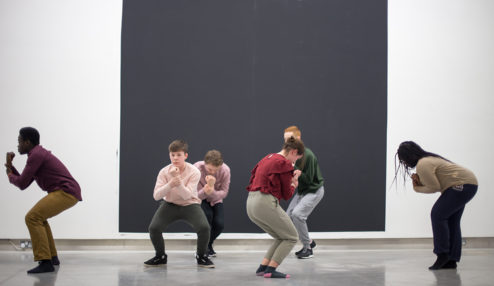
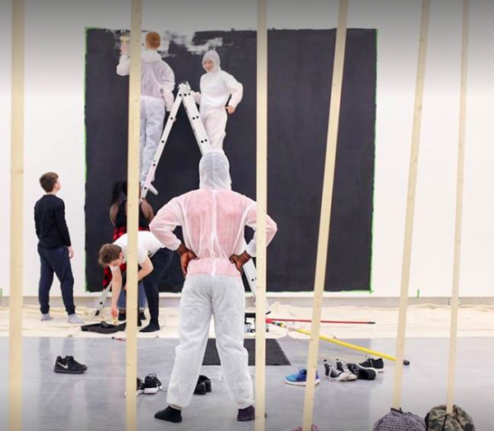
Pathos of Distance
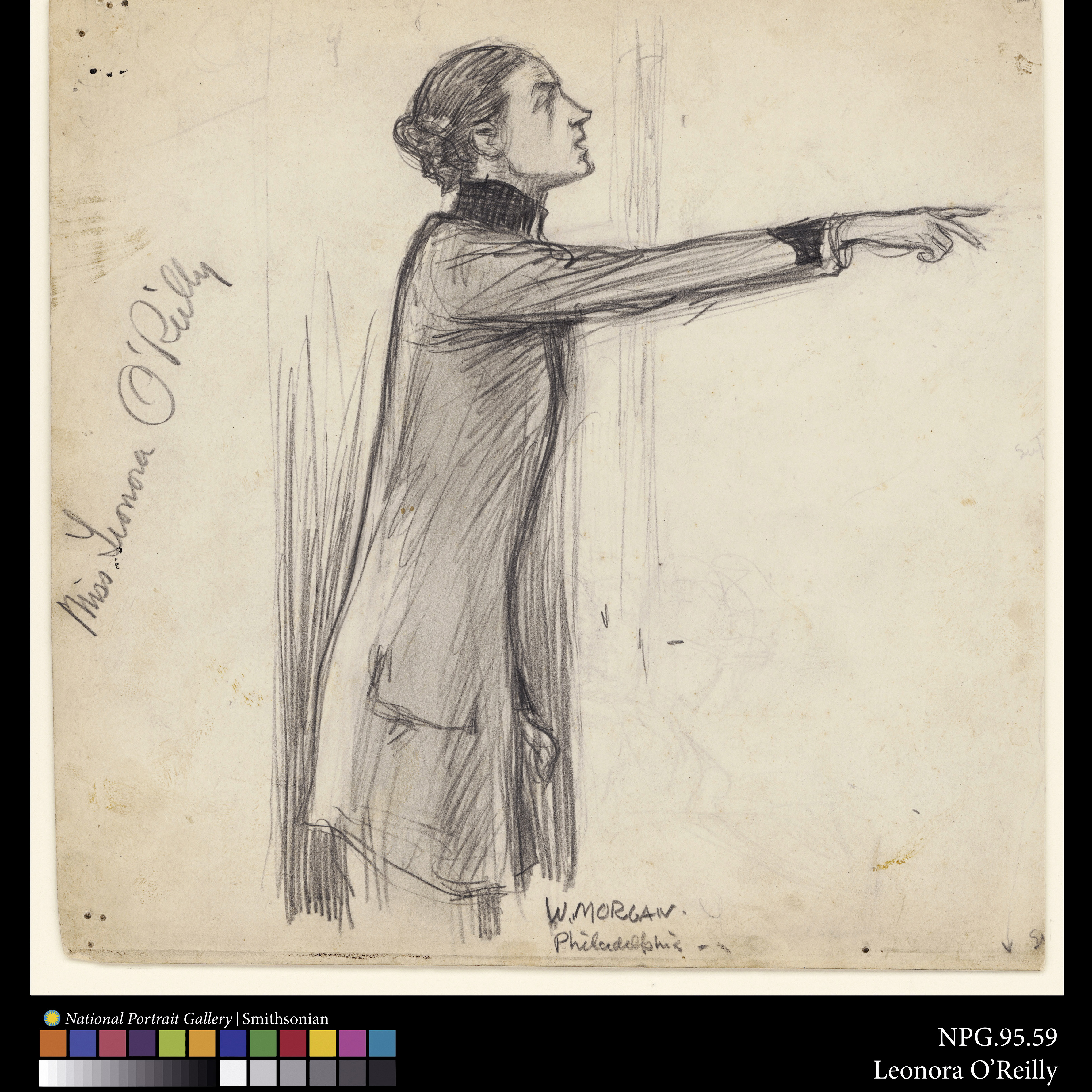
2015 | A solo exhibition in collaboration with the ESB Centre for the Study of Irish at at the National Gallery of Ireland. Installation with used furniture, plinths, digital photographs and texts. Curated by Donal Maguire.
DONAL MAGUIRE | In early 2015, the National Gallery of Ireland invited Sarah Pierce to engage with the ESB CSIA in the ongoing research project: Visualising the Irish Diaspora. The aim of this collaboration was the creation of a new artwork by Pierce exploring the concept, themes and subject of this art historical project.
Pathos of Distance wass formed around 42 images relating to Irish migration and diaspora, created between 1813 and 1912. Sourced from countries around the world, they were photographed and reproduced to their original scale. Pierce presented them in a series of sculptures constructed from items of second-hand domestic furniture, culled from the stocks of suppliers in Dublin. In bringing these disparate images and objects together, these sculptures evoked the concept and rhetoric of diaspora, suggesting themes of displacement and hybridity.
Hybridity is further articulated through the exhibition itself, which was at once a display of the images uncovered by the research project and an artwork. The sculptures were accompanied by research notes, inventories and references, which provided historical information, and insight into the thoughts and processes that guided the project.
Through a diverse and sometimes challenging range of imagery, relating to the lives of extraordinary people and disparate communities, Pathos of Distance revealseda distinct variety of approaches to the visualisation of the Irish diaspora. The visual relationships and sightlines in the exhibition invited the viewer to consider and question the role and significance of images in the formation of a diasporic cultural identity.
NOTES | Sarah Pierce on making Pathos of Distance
Gag
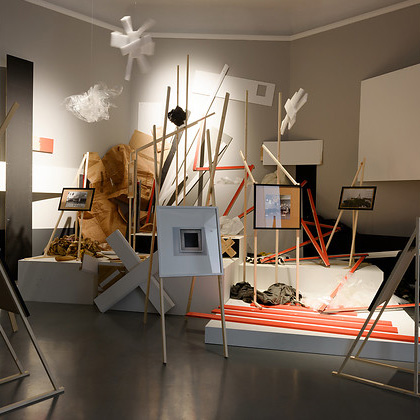
2015 | Installation and performances (Gaelic), developed jointly with Sarah Glennie and the Irish Museum of Modern Art (IMMA) for El Lissitzky the Artist and the State, and Annie Fletcher and the Van Abbemuseum for Positions #2. Various materials and debris, plinths, customised easels, digital photographs, with six lithographs by El Lissitzky (courtesy the Van Abbemuseum). Performances in Ireland by Theatre Club.
ANNIE FLETCHER | Sarah Pierce’s Gag consists of a large-scale installation and a series of short performances. Both the installation and performance relate to themes within the development of tableaux performance as a political tool used by artists Alice Milligan and Maud Gonne.
The title refers to the historic outlawing of the Gaelic language, a loss of speech, censorship, and the silence of the tableaux. Pierce has responded to the use of Celtic mythology within the tableaux as a way to seek a ‘new’ language in theatre that would resonate politically throughout the country. It is a strategy that on the surface counters the language of revolution seen in the works of their European and Russian counterparts – and this contrast informs Gag.
The starting point for the installation is an archive of debris which has direct reference to both the immediate past and the ‘historical’ present. In the lead-up to the exhibition, the unused scraps and remnants from the de-installation of the previous exhibition and the current exhibition were amassed in the gallery and kept. This material presence conveys the reality of taking apart, building and presenting that runs through the ideas of revolution and nation-building — and here Pierce views the exhibition as a compressed allegory for what it means to move from one ‘time’ to another.
Pierce uses a range of media, often with others in collaborations that draw upon art’s relationship to the political. Her focus is the archive and repetition, student work, test pieces, gesture and the address. In her own words, her project is deeply committed to a radical turn away from the cult of the artist and individual achievement towards the signs and symbols of an entire system of art making.
EXHIBITION BROCHURE | IMMA Dublin
Birdcalls (after Louise Lawler)
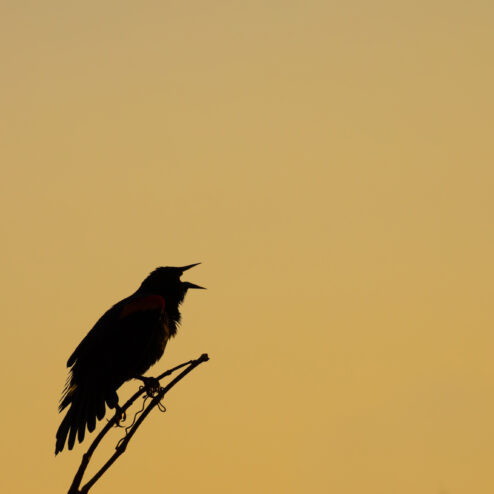
2014, 2015, 2016 | Performance with MP3 audio and digital print. After Louise Lawler’s Birdcalls (1972-81). Developed for NCAD Gallery in Pull Bite Rally, commissioned by Black Church Print Studio. MP3 in Continuous Drift, a permanent sound installation in Meeting House Square, Dublin. Curated by Sven Anderson.
The iconic work by Louise Lawler sounds the names of various well-known male artists—including Vito Acconci, Carl Andre, and Donald Judd—in the style of birdcalls. “The humour and wit are balanced by the knowledge that these white male artists are continually recognised as being at the forefront of art, its discourses, and its histories, with no symmetrical attention paid to the significant contributions of women artists and artists of colour in the discussion of advanced aesthetics.” – Dia Art Foundation.
Living in Dublin since 2000, artist Sarah Pierce made an analogous performance with names of male artists based in Ireland.
My dear Betty
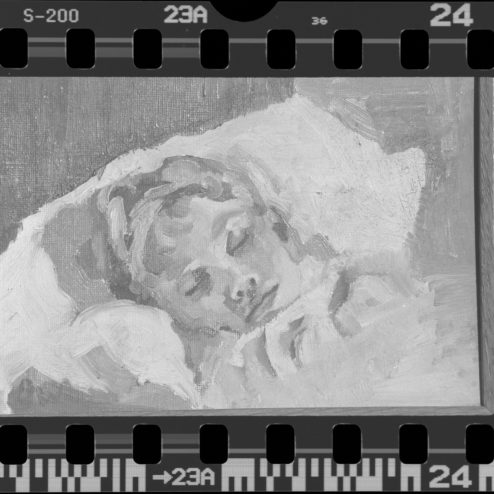
2014 | Etching with chine collé and digital prints. Edition of 7. Commissioned by Black Church Print Studios for Process artist-in-residence programme. The Betty Webb file, courtesy of the Centre for the Study of Irish Art at the National Gallery of Ireland.
SARAH PIECE | My dear Betty, It has been very remiss of me not to have written to you before now, to offer my congratulations on your engagement. I was away and you were away and there was no immediate hurry, and I always put off everything…
1933, Letter to Betty Webb from Dermod O’Brien, President of NCAD
The letter continues, woven with affection and good humour by a mentor who clearly holds his student Betty in high esteem. His fondness is palpable. It underlines the jests about getting married (a fate befallen to ‘pretty girls’) and abandoning painting for a new life. But beneath the gentle tease is an undertone of regret – a sense of loss for a future where Betty Webb has given up being an artist, and where O’Brien is usurped by her “new life” with a husband.
After her death, Betty’s sons handed the letter over to the National Gallery, together with a few sheets of negatives that document the paintings Webb made in her lifetime. Workmen, sailors, still lifes, a donkey, portraits of family members – father, husband, children, grandchildren. So she did not abandon art, not entirely. Although the historical status of the letter’s author is primarily why the National Gallery acquired Webb’s effects, the assimilation of her papers into the archive brought an unexpected story about the ordinariness of being an artist. For my print with Black Church Print Studio we have received permission from the Webb family to reproduce the letter as an etching, along with an inverse digital print of a negative from the file that reveals a portrait of Webb as an art student, and a present day photograph of the file in context. The prints form a portfolio that will be deposited in the CSIA archive where it will exist for posterity
alongside the originals.
And Betty continued to paint. Sleeping children feature, perhaps she found time at the end of the day.
Levitating in the Nauman
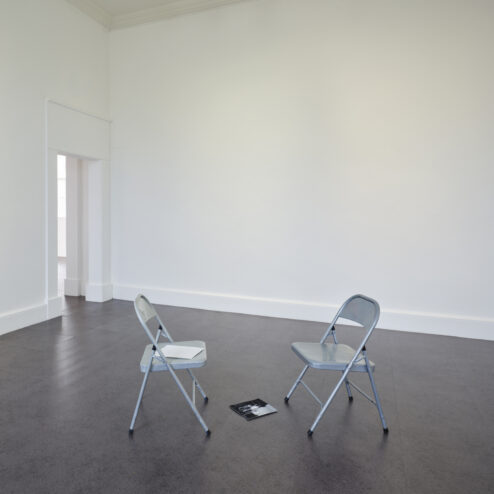
2014, 2016, 2018, 2021 | Performance, chairs, Xerox print of Bruce Nauman’s Failing to Levitate in the Studio, 1966. Originally commissioned for Shimmering, Krobath Wien 2014 by Rike Frank.
Based on an elusive double exposure photograph by Nauman, the performance taps into the mystical, material repetitions of being an artist. An occasional performance element accompanies the work.
Place two folding chairs on the floor facing each other.
Adjust the distance between them to match your height.
Study the photograph.
Walk around the chairs.
Perform gestures. Make sounds. Chant.
Lie across the chairs and imagine your are levitating.
(Pull the chairs away and take a picture at the exact moment.)
Try a few times, until you get it right.
Tree Dance (with live element)
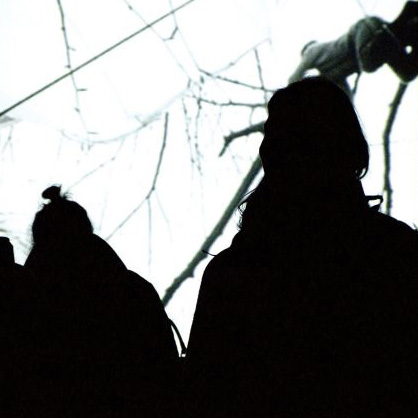
2008, 2014 | A live element performed simultaneously with an outdoor projection of Gordon Matta-Clark’s Tree Dance (1971). In Gracelands, Co. Leitrim 2008; Summer Rising IMMA Dublin 2014. Curated by Vaari Claffey. Single channel projection, trees, lights, ropes ladders.
Lost Illusions/Illusions perdues
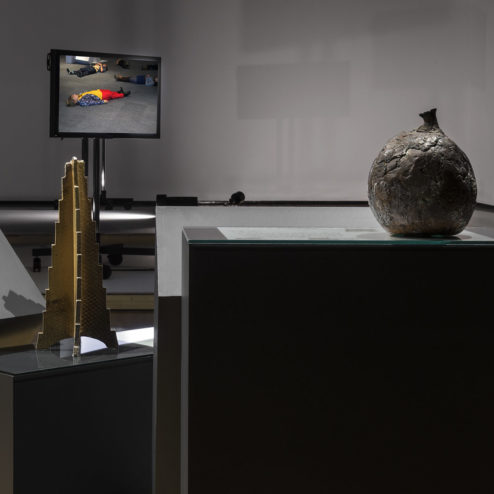
2014 | An exhibition in three parts, developed jointly with Walter Phillips Gallery Banff AL, Mercer Union Toronto ON, and SBC Galerie Montreal QB. Performances by the Conceptual Art Club (Banff), Olivia Simpson and Kayla Krische (Toronto), and Thomas Dalbec (Montreal). Installation with ceramics, plinths, video, and archival materials, including Josef Svoboda’s set designs c. 1970, courtesy the Banff Centre Archive. Commissioned by Pip Day, Georgina Jackson, and Jesse McKee.
GEORGINA JACKSON | Sarah Pierce’s Lost Illusions/Illusions perdues (part two) refers to the ‘lost illusions’ of the recent past, and present. In this exhibition, support structures from recent exhibitions re-appear as material excluded from the institution’s archive while the galleries are divided into black and white. Artworks or ceramic test pieces belonging to an unofficial archive of works that have been left behind at the Banff Centre, are presented in the form of large posters while the gallery has become a work space to make these objects again, transforming from mutable material to robust form while drying out during the exhibition’s time span.
Related events feed into the exhibition, working to destabilize the status of the solo presentation. The first, in Banff, is a particular residency that took place at the centre in the early 1990s called “The instability of the feminist subject.” This residency involved participants from Europe and North America, all of whom were women. I am gathering (and recovering) anecdotal stories relating to a final nudist pool party on campus, and this material will become part of a new performance that will take place in the gallery. This performance involves six actors, and a ‘script’ that evolves from place to place in three parts.
Physical forms are installed against the backdrop of video works showing performers working individually and together, connecting and disconnecting memory and image, movement and gesture, voice and chant, to embody the process of making art. This two channel film, documenting a workshop organised by Pierce and employing techniques from Brecht’s ‘learning-plays’ displacing mimesis by combining physical gesture and attitude, exists in duplicate, as two films and two individual students struggling with issues of translation, manner, chant and action.
In gathering material left behind from previous exhibitions, remnants of an institutional archive, forgotten objects, and a ‘learning play’ workshop with two art students, Pierce brings to the fore artworks, objects and moments that have been recently suppressed, renegotiating the role of the object, the artwork, the timeliness and contingency of gestures, actions and questions of community. The processes of research and presentation that Pierce undertakes highlight a continual renegotiation of the terms for making art: the potential for dissent and self-determination, the slippages between individual work and institution, and the proximity of past artworks.
Six Propositions
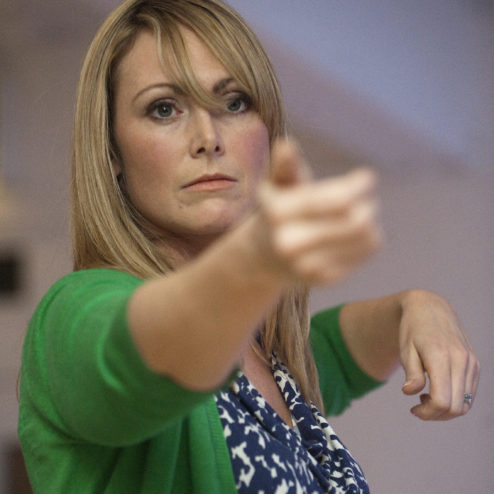
2013 | Performance and installation for six actors. Debris archive (empty paint buckets, used rollers, plaster, cutaways, nails, bits of wood, packing materials and crates), platforms, black and white photographs, easels. Original script by Sarah Pierce. Commissioned by Sarah Perks and Declan Clarke for the exhibition Anguish and Enthusiasm: What do you do with your revolution once you’ve got it?, Cornerhouse Manchester.
BREN O’CALLAGHAN | How does your new commission for Anguish and Enthusiasm relate to the post-revolutionary theme? Will it be a broad response, or do you have a particular focus or historical episode in mind?
SARAH PIERCE | The project relates in a board sense; post-revolutionary is not a theme in the work. But in terms of focus and attention, or loss of attention, there is a relationship between the loss of attention or focus that can occur when a demand is met, then what?
B O’C | The title, Six Propositions, has connotations of forced suppression of liberties and/or oppression of free speech. How might this manifest in the work?
SP | The gag works on different levels – it is a suppression and it is also a visual gag – so it is something that suppresses word and also works without words, visually. It has a double meaning.
B O’C | What materials do you intend to use?
SP | For this project the references include Charlie Chaplin and JL Godard’s La Chinoise. The 6 actors work with a variety of materials in the gallery to construct scenarios that play with a ‘visual humour.’ In comedy anything that conveys humour without works is called a sight gag, and I was interested in using the gallery as a kind of ploy, so that in a series of quick scene changes a kind of physical impossibility and unexpected humour plays out through what the actors are doing and where they are. The humour is caused by alternative interpretations of the goings-on.
B O’C | Do you have any existing methods you intend to apply, or will it be wholly improvised?
SP | Part of what I do is test the timing of artworks, how long it takes for them to come about, what kind of investments of time come into play when we think about making and doing… so this is compressed in this piece since much of the making happens when I arrive, over a short period of time. I have worked this way on other projects: both It’s Time Man It Feels Imminent and The Artist Talks have elements that require me to make them onsite, with a similar sense of immediacy, and of course the performance Future Exhibitions too. It is not improvised, I am planning, working, thinking and it comes together usually with a script that is written along the way.
B O’C | What is it about live performance, interviews and conversations that draws you back to these areas time and again?
SP | I like the temporal zone where thinking and doing kind of collapse into each other; they don’t remain discrete, or if they do there is a necessity to scatter them – they disperse in the way I use them.
B O’C | It feels as though you use language almost as if it were a physical substance, like clay or pigment: constructing layers, revealing form, exposing patina. What challenges does this pose for interpretation and presentation?
SP | I’ve never thought of it like this – but it perhaps speaks to the gestural as something that is displayed, through language, but is not language. In this way what I am doing is almost the opposite of a performative work, it is not communicating, it is not doing and saying. It is physical in that sense.
Future Exhibitions
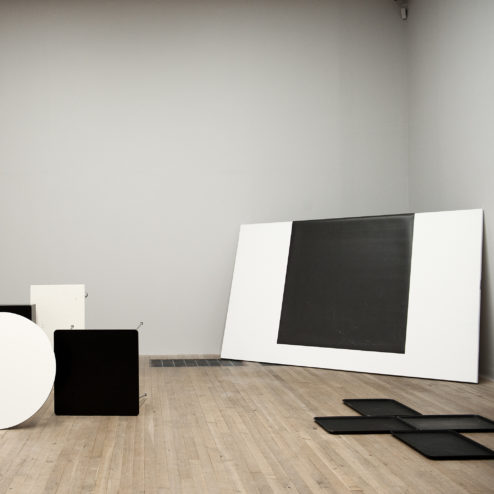
2010, 2011, 2012, 2013 | Performance with residual elements. First commissioned for Push and Pull, Mumok, Vienna, 2010 and Tate Modern, London, 2011. Curated by Barbara Clausen, Achim Horchdorfer and Catherine Wood.
Push and Pull
BARBARA CLAUSEN | Future Exhibitions takes place in the midst of Allan Kaprow’s environment Push and Pull: A Furniture Comedy for Hans Hofmann (1963). In this, furniture such as chairs, tables, lamps and carpets turn in to a (comedic) action room in which the visitors are challenged to perform the interaction between art and life. Kaprow’s environment is part of the MUMOK collection and the starting point for Pierce’s analysis of the conception of the history of curating. It is newly installed by the artist and adapted as a stage room for action and as an installation for Future Exhibitions. A performer describes a series of scenes to the audience. Each of them is related to an archival document of a historical exhibition – a photo, a catalogue, a letter, newspaper cuttings or artists’ statements. After each monologue a change of scene takes place in front of the audience, in which the everyday objects on the set are arranged into a new sculptural setting. Future Exhibitions uses the document as a conceptual device and as a literal marker of the ways that institutions anticipate ‘the work’.
VIDEO | Excerpt of performance at Tate Modern in Push and Pull 2011
IMAGES and ESSAY | Future Exhibitions at Tate Modern, London 2011
Towards a Newer Laocoön
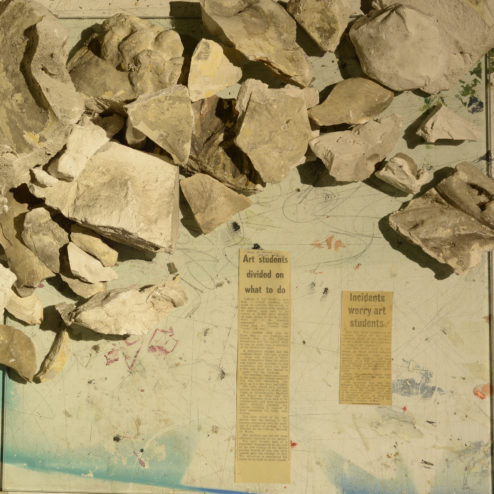
2012 | Installation and archive: Films from the Irish Film Institute Irish Film Archive; plaster friezes and fragments; hantarex monitors, tables and gels. Commissioned by Sarah Glennie for the Irish Film Institute for the solo exhibition Towards a Newer Laocoön, National College of Art and Design Gallery, Dublin. Works: Laocoön and friezes, artists unknown, c. 1750; Newspaper clippings and handwritten note, 1969, courtesy National Irish Visual Arts Library’s NCAD collection; Amharc Éireann newsreels (Art Students Get Twisted, 1963; Anti-Apartheid Movement Grows, 1964; The Cork International Choral Festival, 1962; Nigerian Independence Ball, 1960; Students Stage Boycott March, 1960), courtesy Gael Linn Collection; Shellshock Rock, 1979, courtesy John T. Davis (dir.); Messing With The Kids, 1977; The Black Irish, 1976, Smuggling and Smugglers, 1965; Black Babies Are Growing Up, 1973, courtesy Rhadarc Films; 36th Battalion, The Congo, 1959, courtesy the Irish Military Archives; Chronique d’un été, 1961, dirs. Jean Rouch and Edgar Morin, courtesy Icarus Films; The Question Would be the Answer to the Question, Are you happy?, Dublin chapter, 2012.
DECLAN LONG | (excerpt) A notable remnant of a specific ‘rebellion’ features in Towards a Newer Laocoön, Sarah Pierce’s exhibition at NCAD Gallery. This is the borrowed Laocoön sculpture itself: a damaged relic from a period of prolonged protest at the college in the late 1960s. For some years it has been a marginal presence on campus, an ignored leftover of a prior era of academic art. Occupying a hardly-noticed position close to the students’ union, its relevance to earlier convulsions of radical dissent in the college goes mostly unacknowledged. Now, re-located by Pierce to a dedicated site of artistic attention, this neglected antique object becomes part of a quite differently ‘rebellious’ scenario, one in which convulsions of meaning may begin to occur: an exhibition context in which appropriated elements seem to collide inappropriately.
The Artist Talks
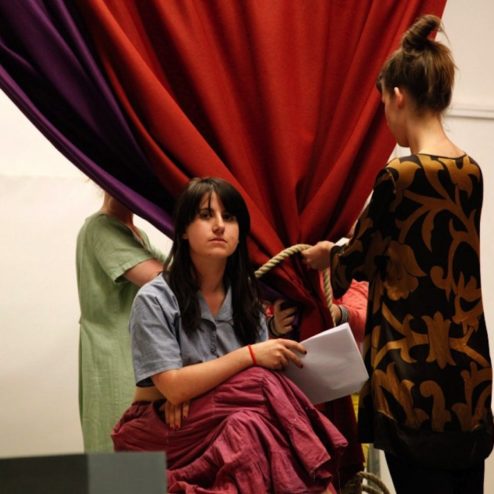
2012 | Installation (stage, felt curtains, boxes, props, spot lights, photographs, gel filters); performance (with Sean Burns, Rachel Dowle, Seth Guy, Rebecca Kirkpatrick, Kristin Luke and Kate Mahony); and Video (single channel, 19 min 27 sec, with Eddie Aparicio, Taylor Deltz, Alison Dineen, Kate Falcone, Cooper MacKenzie and Janet Wiles). Co-commissioned by Book Works and The Showroom, London.
The Artist Talks repositions the convention of the artist’s talk as an open system with the potential to disturb or re-invent past artworks and received ideas. Using new video work, photographs, sculpture and performance, the exhibition contains a range of material and references that open up the relation between speech and archives. A stage is the setting for a choreographed ‘artist talk’, which has been developed as a group performance in collaboration with art students and uses fragments and gestures from past artworks. An arrangement of props, objects, video and photographs will frame the event with material that includes a film of students describing uncompleted artworks, and a set of small clay studies based on the unsigned sculptures that became known as ‘unknown Rodin’s’.
Drawing from these references, and the fleeting asides, verbal punctums and interruptions that often disturb the conviction of a ‘finished’ work or the flow of prepared speech, The Artist Talks is an assemblage of actions and objects that mediate artworks.
Mid-way through her exhibition, Sarah Pierce invited three thinkers to address the audience with short, prepared speeches that describe a visual work. Presented as a sequential lecture, one after the other, Dave Beech, Melissa Gronlund and Grant Watson offered verbal descriptions of artworks that remained unnamed. The visual entered the talk in the reciprocities between words and thoughts, speakers and listeners, language and imagination.
On the last day of the exhibition a choreographed ‘artist’s talk’ with six London-based art students took place in the gallery. This short, revised speech uses props and a central stage that form part of the installation, along with a text written in 1905 by the poet Rainer Maria Rilke. In a group dialogue the performance gestures a mode that all artists occupy: where speech and the archive coalesce, documentation anticipates the event, and words disturb the finished work.
The Question Would be the Answer to the Question
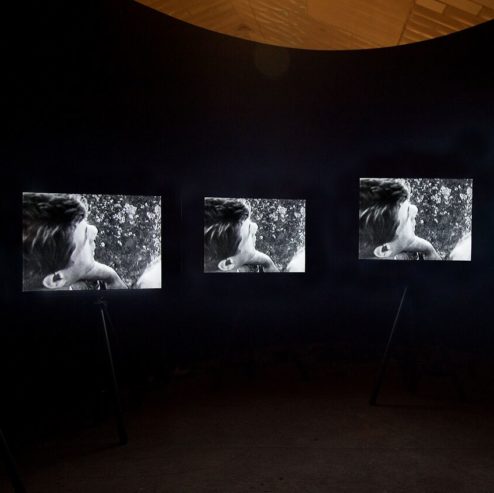
2009 – 2012 | Four channel video, synched with simultaneous translation in English, Danish, French, Irish.
DUBLIN |commissioned by Sarah Glennie for the Irish Film Institute and NCAD Gallery 2012
COPENHAGEN | commissioned by Mark Sladen at the Kunsthal Charlottenborg 2011
PARIS | commissioned by Yann Chanteigne at the Centre Georges Pompidou 2010
BILBAO | commissioned by If I Can’t Dance, Episode III, Masquerade at Sala Rekalde 2009
SARAH PIERCE | For each chapter, a group of local university students from sociology, anthropology, art history, fine art and political science gather at a venue. First, we look at the film Chronique d’un ete by Rouch and Morin, then we talk about it.
Are you happy? Are you happy?
1961 is the year that the French anthropologist Jean Rouch and sociologist Edgar Morin made Chronique d’un été. The filmmakers enlisted a cast of real ‘characters’ – students, office workers, Renault workers, artists, families, couples – to portray everyday life in Paris during one summer. The film opens with Marceline, on the street, portable microphone in hand, interviewing a passersby. Her opening question: “Are you happy”?
And amidst the everyday, debates ensue, interspersed with references to politics such as the war in Algeria or events in Korea following a student revolution in the spring…
I watched this film for the first time as a university student in a class called Russian 20s|French 60s. It is part of my ‘personal canon’ – an archive of films that I’ve found myself looking at again and again. I’ve only experienced it with subtitles. With only rudimentary French at hand, I’m keenly aware that much of the film is ‘lost in translation’. A symptom, but also a quality of interpretation; a subjectivity that leads to personal understanding.
PROFILE | If I Can’t Dance Magazine #5
Intelligence of the Measured Hand
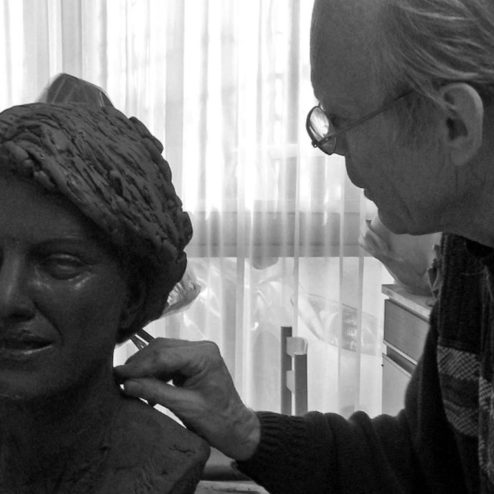
2011 | Three single channel videos on Hantarex monitors: Interview with Robin Buick; Working in the studio; The artist’s garden in Black Rock, Co. Dublin. Single channel audio on PA speaker (Arnim’s model drawing class, Düsseldorf Academy of Art), 2 glass vatrines with archival materials, unfinished study in clay by Robin Buick. Commissioned for Appeal for an Alternative, Schmela Haus, Stiftung Kunstsammlung Bordhein-Westfalen (K21+K20), Düsseldorf 2011. Curated by Lisa Schmidt.
Intelligence of the Measured Hand brings together several elements that revolve around ideas of mastery and virtuoso skill, drawing on a relationship between the student and teacher, the craftman and the artist. The videos show an interview with artist Robin Buick and his studio, as he works on a clay study that is on display in the installation. The layout of the room refers to the history of the Schemla haus and specifically, to an artwork by Joseph Beuys, included in the K20 collection, where he used a plaster head made by one of his students. The findings from a subsequent legal decision after Beuys’s death, when the student brought the estate to court, are included in the installation, along with newpaper clippings about the case.
LISA SCHMIDT | When we started talking about the show I sent you a couple of photos of the exhibition space. How did you experience the actual physical space when you came to visit the Schmela Haus in contrast to this first visual encounter?
SARAH PIERCE | What captured me from the outset was less that this is an historical example of architecture within the oeuvre of a “great architect” – in fact this is not compelling to me at all. In some ways, I treat that aspect of the building as merely anecdotal. Comparing the two encounters – the initial physical one with the photos you sent me – it is difficult not to consider how memory and the document coalesce in an encounter with the Schmela Haus. Entering the space, I am entering an archive, and as with any archive a certain level of mediation gives access to the building’s dominant meaning. This is not the same as access to what lays beneath the surface, out of reach. The installation, the architecture, the archive, all present tentative, transitory stories about speculation and deferral. All of the information that circulates about the architect, the building, its connection to a family and various artists, to an architectural movement, all of this matters, but more relevant to my installation is that the Schmela Haus exists as a medium or means of doing something, and that its past is embedded in the physicality of what that ‘something’ is – both physically and technically. Within the exhibition space, the installation acts as a suspended encounter. There is a temporary amalgamation of disparate materials there, including the person who, like me, enters the Haus and upon entering is left slightly abandoned, not really belonging.
LS | The installation in this exhibition is reflecting your interest in art education. How did it come to the involvement of the sculptor Robin Buick and what can you tell us about the cooperation?
SP | I approached Robin Buick because of his intense involvement in the Classical tradition. He is an artist in his seventies who lives and works in Dublin. At first, I simply wanted to ask him about classical techniques. I commissioned him to make a study of a female head in clay, which I asked him to present to me ‘unfinished’. At a certain point I decided to interview him.
Solzhenitsyn wrote that of all the 19th century radical utopian revolutions, the Modern Art Movement was the only successful one. It has certainly shaped the art theory and pedagogy of the 20th century as well as – discrediting and dismantling of the former 19th century one. We are still living in the legacy of this. Although some people like myself are questioning the value of 20th century ‘Modern Art’ and of 3rd level degrees based on it; it is simply too well established to be easily changed…
– Robin Buick, Dublin 2011
The schism is about competing value systems – and what one ‘values’ as art. Which led me to a conceptual link between teaching and making art. Not teaching as knowledge-transfer, or even instruction, but teaching as a kind of performative act similar to a promise or a confession. And this is where I started to see a strange relationship to Joseph Beuys – a way of working that concentrates on the energies (whether shamanic or erotic) that are at odds with how art schools ‘prepare’ students to transform. Beuys used a plaster head made by one of his students in an artwork. This story exists anecdotally alongside the other material in the installation.
For this project, I wanted to signal mystical relationships that are not formalised under the rubric “art education”. There is a sense of anticipation and deferral here, again to go back to the story of the Schmela Haus, where student artwork is never finished, never in the right time. In some ways, the cooperation with Robin undoes the legacy of Beuys, by allowing us to see both artists struggle with the interplays between virtuosity and intuition, teacher and student, mastery and technique, repetition and creativity.
What is already and what will become
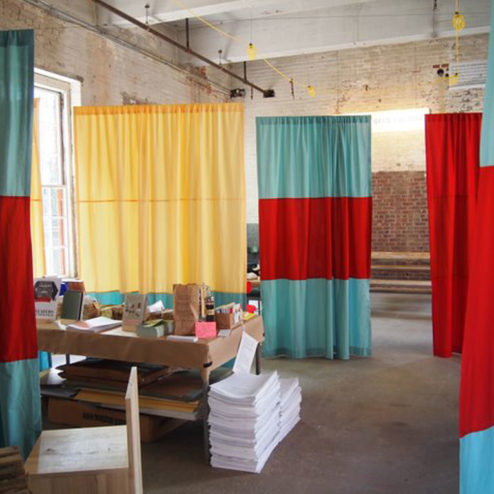
2011 | Six custom-made curtains, various dimensions. Commissioned for I’m Searching for a Field Character, Mass MOCA, North Adams, MA. Curated by James Voorhies, Bureau of Open Culture. | Dublin Art Book Fair and Magazine Archive, Temple Bar Gallery & Studios, 2011.
Based on conversations with Jim Voorhies, we began to think about relationships between institution, institutionality and education, and the ways that these relationships are present and apparent as well as oblique. Shifting institutional interests and structural, as well as, basic, practical restrictions like budgets often force education into a peripheral, supplemental role, all the while under the rhetorical promise of what is optimistic, positive, and ‘good’. With this in mind, I decided to build on an idea of “searching” that is less about acts that leads to a discovery, and more about difficult, tenuous operations that build up and breakdown. Importantly, searching sometimes leads to a dead end.
The six curtains are always presented as part of an institutional project in educating and disseminating: a reading room, a library, a book fair, but not an exhibition. It is an artwork that works against and excludes the exhibition. It moves and is moveable, it obstructs and structures space, and pushed aside, when it is ‘opened’ it disappears. It decorates and blows in the wind.
Campus
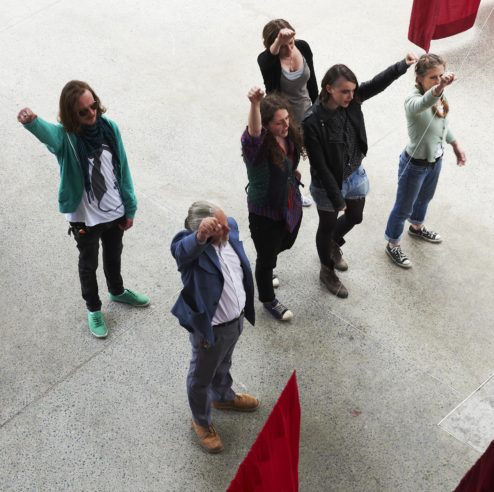
2011, 2012, 2017 | Group performance with fabric curtains. Original script by Sarah Pierce. Text adapted from JoAnna Commandaros’ instructions to sculpture students in a 3-dimensional sculpture class, University of Pittsburgh. Archival materials courtesy the University of Pittsburgh, University Archives Information Files, Civil Rights Archives.
PERFORMANCES TO DATE | Mattress Factory, Pittsburgh with Sarah Lavery, Julia Cahill, Elise Walton, Sami Stevick, Ashley Hickey, Henzle, Tom Sarver, Ben Rickles, and Joe Messalle. Commissioned by Georgina Jackson for the exhibition Neighbourhood, 2011 | Tasmanian School of Art, Hobart with Laura Hindmarsh, Benjamin Ryan, Claire Krouzecky, Lucy Rollins and Ryan Harrison. Commissioned by Paul O’Neill for the exhibition Our Day Will Come, 2011; Eva international, Limerick with Caelan Bristow, Gimena Blanco, Rosa Abbott, Graham Gill, Darius Murtagh, and Claire Breen. Commissioned by Vaari Claffey for Gracelands, 2012 | Stroom, Den Haag with Bianca den Breejen, Katinka van Gorkum, Maaike Lauwaert, Najmeh Saghaei, Kosta Tonev, Sindy Toppenberg, and Zoe Reddy. Commissioned by Capucine Perrot for I Proclaim!, 2012 | VOX, Montreal with Anne-Marie Trépanier, Janick Burn, Audrey Wolski, Benoît Courchesne, Anastasia Domerego, Catherine D’avril, Laurent Viau-Lapointe, Valérie Nadon, and Fabien Marcil. Commissioned by Vincent Bonin, Barbara Clausen, Marie J. Jean for Something to say – Something to do, 2012 | BAK, Utrecht with Flora Woudstra, Wilfred Tomescu, Valentina Curandi, Sanne Kabalt, Avan Omar, Hannah Kindler, Zhenia Vasiliev, and Despina Sevasti. Curated by Henk Slager for To Seminar, 2017.
GEORGINA JACKSON | Campus, emerges from Pierce’s ongoing interest in the college campus as a space of community predicated on shifting levels of presence and participation. Pierce focused on the University of Pittsburgh, looking into the decade of transition between 1959-1969, when the civil rights movement merged into, and on some levels became obscured by, the anti-war movement. This work references such activities in presenting selected newspaper clippings from the University of Pittsburgh’s archives, specifically student protests that led to the formal establishment of the Black Action Society (BAS) in 1969. This archive material is presented against the backdrop of a series of large red curtains, and from behind the voice of a woman resonates.
As viewers move through the space, the curtains both guide and obstruct, changing colour in the light and perhaps hinting how with a slight shift in viewing, things become prominent or can disappear. In the far corner a monitor shows a film of a performance by a group of individuals staged during the opening of the exhibition. The performance emerged from a workshop conducted by the artist during which gestures familiar from political protests were acted out along with phrases borrowed from a sculpture class: the female voice belongs to the instructor who tells her students, for example, to “find a place to stand, step back, and look.”
Here, Pierce’s interest in the campus merges with ‘being student’—a concept she develops in her work to describe a state of immediacy and engagement in a present moment. As we listen to the art instruction recorded during a sculpture class at Pitt in April, 2011 ideas about technique and observation merge with other acts that involves ‘seeing’ and ‘doing’.
If an act is acknowledged through repetition, a gesture, a mark on a page, what role does each individual act play? The objects the students in their studio classroom are observing and creating do not exist within the gallery space, neither do the campus events of 1969; but they are the present in which we exist.
VIDEO | Documentation of Campus at VOX, Montreal 2012
CAMPUS | Annotated script by Sarah Pierce in To Seminar, ed. H. Slager 2017
Film Club 1961-2011
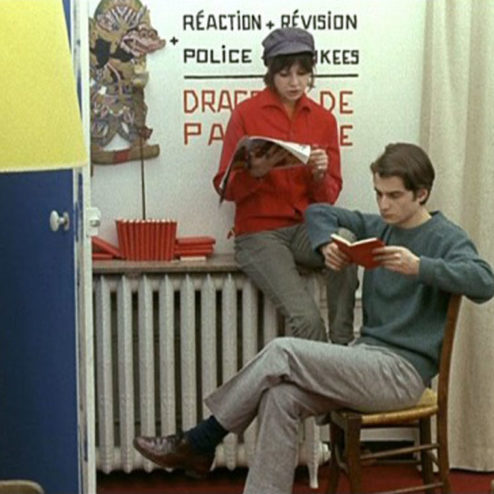
2011 | Curated project as part of Sarah Pierce’s solo presentation 1961-2011 at the Kunsthal Charlottenborg, Copenhagen 2011. Image | Film still. La Chinoise, dir. Jean Luc Godard, 1967.
MARK SLADEN | The Research Programme is a new strand at Charlottenborg, and the first block has been created by the Dublin-based artist Sarah Pierce. The programme will always be generated by a researcher-in-residence, who will have the use of the Kunsthal’s guest apartment. It will always include a display, but also a range of events—and Pierce’s curated events take the form of a film club and a display in the Antechamber of archival material from Charlottenborg’s archive from around 1961. Pierce, working with the Kunsthal’s archivist, Ingvild Hansen, and the art historian Jens Tang Kristensen, has gathered together a collection of idiosyncratic letters, informal correspondence and other printed matter. Taken together the archive creates its own reflections on the dreams and realities of the utopian moment from which Rouch and Morin’s work emerged.
Film club
SARAH PIERCE | 06.04.2011, 19.00 | For the first Film Club Sarah Pierce introduces and screens parts of her ongoing film project The question would be the answer to the question, ‘Are you happy?’, together with Rouch and Morin’s Chronique d’un été, while touching upon the latter’s important impact on contemporary art and visual research.
YAEL DAVIDS | 13.04.2011, 19.00 | The Israeli artist Yael Davids presents her video project The hand is quicker than the eye (2009), made with inmates of the Mechelen City Prison in Belgium and which shows them being taught magic tricks. The evening also features a screening of Robert Bresson’s prison masterpiece, Pickpocket (1959).
DECLAN CLARKE | 20.04.2011, 19.00 | Intrigued by the nostalgic legacy of revolutionaries, Irish artist Declan Clarke screens and presents his short film Cologne Overnight (2010) – which focuses on the current obsolescence of idealism – together with Alexander Kluge’s Abschied von Gestern (Yesterday Girl), (1966).
DAVID LAWSON | 27.04.2011, 19.00 | The British artist David Lawson introduces and screens The Mothership Connection (1995), alongside Jean-Luc Godard’s La chinoise (1967). Lawson was a founding member of the Black Audio Film Collective, which produced some of the most challenging and experimental documentaries in Britain in the 1980s.
The Archive Becoming
HENRI LEFEBVRE | Times, of necessity, are local; and this goes too for the relations between places and their respective times. (The Production of Space 1974)
SARAH PIERCE | I remember being lost in Tokyo. I believed that when I arrived, I could visually match the characters on the tourist map to those on the street signs and successfully navigate my way through the city. I quickly realised this was impossible. In the shift from map to street sign, the characters changed, almost cognizant of a fundamental difference in time and space dimensions. As I stood on a corner by Ueno Park a young couple approached me and asked if I needed help. I conceded and giving each other knowing glances they signalled for me to follow. I felt completely helpless. We zigzagged through narrow streets and I soon understood that there was no ‘direction’ to point me in; I had to follow…
In Copenhagen, over a few weeks in November, I sat with Ingvild Hansen, the archivist at Charlottenborg. Ingvild is Norweigian, and she patiently translated the documents we culled from the attic from Danish to English, thinking and speaking; moving through each letter, budget, note with humour and anecdotes that helped me understand. After I left Jens Tang Kristensen continued the research. A Danish art historian, I imagine the conversations between researcher and archivist became less encumbered then, but perhaps no less personal. Ingvild and I decided to focus our research on the year 1961 – partly for practical reasons; it allowed us a concise point of entry into a decade that itself was about to become. Civil rights campaigns and student protests in the US and Europe were underway, although it would be several years before these movements climaxed on a global scale. Indeed, the term ‘global’ meant something different – as did ‘nation’.
The archive…
A condition of memory, conditioned not just by what remains, but by how we imagine ourselves in what remains.
Time and material, memory and interpretation, public stories and personal lives.
A contest, at the crux of any notion of ‘representation’.
Items belong to an archive, ever attendant, and yet it is impossible to capture an archive in its entirety.
Parts made visible are never ‘one’, never ‘whole’. Always becoming.
An Artwork in the Third Person
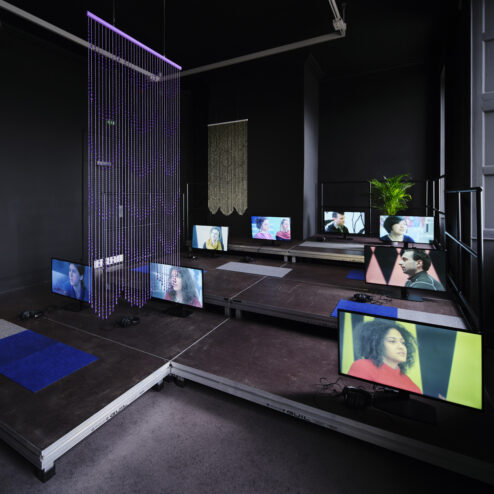
2009 | 8 single channel videos (with Buba Cvoric,Teresa Maria Diaz Nerio, Tzvika Gutter, Rana Hamadeh, Seda Manavoglu, Barbara Philipp, Eva Schippers, James Skunca, Marina Tomic, Yen Yitzu, and Veridiana Zurita), stage, gel lighting, various theatre props, and selected items from the Project Arts Centre Archive 1974-1979, courtesy National Library of Ireland. Commissioned by If I Can’t Dance I Don’t Want to be Part of Your Revolution, Episode III, Masquerade, Project Art Centre, Dublin. Included in the Lyon Biennale 2011.
Describe an artwork in the third person… is the first task posed to participants in a series of one-to-one interviews presented by Sarah Pierce in her multi-channel installation made in association with a group of international students from the Dutch Art Institute (2009). After each response, another question appears, interrupting the immediacy of a two-way conversation, and intensifying the dynamics between thought and language. As the interviews unfold, grammatical tensions mount, and the subjects become aware that they are part of the artwork they are attempting to describe. Set in a black cube with theatre props and lighting, the installation stages its own creation and reception.
A Question Like a Loop
MAEVE CONNOLLY | If I Can’t Dance Magazine 5 (excerpt) […] ‘How do you separate your life from your art? Do you find these questions difficult? Where do you think you are going as an artist?’ Pierce’s interviewees are artists, but they are also students. Their involvement is voluntary, informed by their knowledge of Pierce as an artist with an interest in pedagogy who has also occupied the role of educator. A complex dynamic is apparent in the videos. Conscious that they will be identified by name and perhaps judged on the basis of their responses, the interviewees take the process seriously. Some deal with the situation by saying as little as possible. Others say a great deal even while they struggle to articulate their experience. One pauses often for words and demands more time, choosing her words carefully and comparing the form of a question to a loop.
Perhaps all questions are ‘like a loop’, simply because they attempt to elicit a response. Each interview ends with a statement that might also be a promise; ‘Now I’ll give you a fair crack, you can ask me a question’. Several questions are posed but no answers are forthcoming, on screen at least.
VIDEO | interview with Sarah Pierce
In Two Minds (expanded)
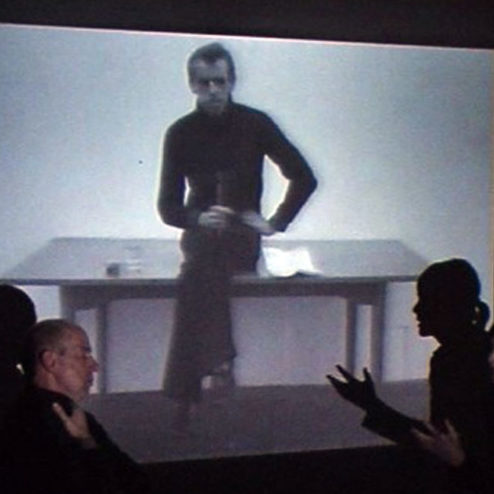
2009 | An expanded performance by Kevin Atherton and Sarah Pierce on the performance In Two Minds, 1978 by Kevin Atherton.
In 1978, the artist Kevin Atherton made a performance where he video-taped himself asking a set of questions. He later answered the questions in person, responding live to his previously recorded self. The work is called In Two Minds. For her solo show at Four Gallery, Dublin in 2009, Pierce and Atherton made the performance, this time as an interview where both artists interacted with the recording made thrity years prior.
Within the series of If I Can’t Dance Tonight, Sarah Pierce invited the Kevin Atherthon to come to the Van Abbemuseum to perform In Two Minds, again. The duo spoke about relationships between conceptual practice, self-reflexivity, audience, and time – topics articulated in Pierce’s own practice as well, often in a quest for self-determination and plural voice. They made the performance at the Van Abbemuseum, Eindhoven as part of If I Can’t Dance Edition III From Dusk till Dawn, 2010. For Kevin Atheron’s Printed Project book launch at Void Derry they partnered once again to make the performance, this time with audio of Pierce sampled into the pre-recorded playback.
Are there any questions?
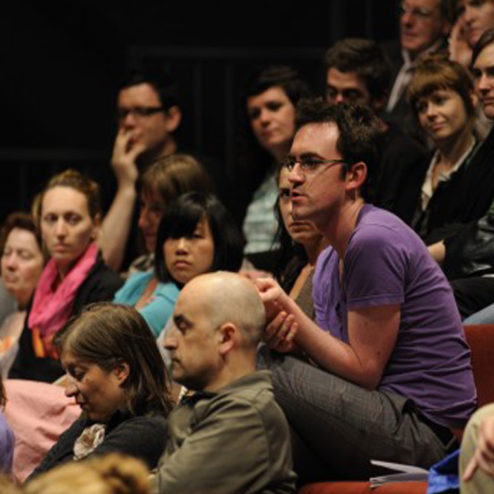
2008 | Performance by Kevin Atherton, 1979. Frascati, Amsterdam 2008. Commissioned by If I Can’t Dance | Project, Dublin 2009. Commissioned by If I Can’t Dance | Ludlow 38, New York Wyoming Building 2009. Commissioned by The European Kunsthalle.
In 1979 the artist Kevin Atherton delivered an artist talk at a school in the UK. Immediately after he was introduced, he asked the audience, “Are there any questions?” A punctuated silence. He asked again, “Are there any questions?” This time someone posited a reply, in the form of a question. After answering, Atherton repeated his question, and over the next hour the talk proceeded in this way, thereby inverting the sequence of knowledge transfer so that the audience’s unknowing preceded the usual conventional (and limited) narratives that surround what it means to make and receive works of art.
In 2008, Sarah Pierce approached Kevin Atherton in preparation for a talk she was researching on conceptual performances in the 1970s. Atherton suggested that she perform his ‘talk’ as a ‘stand-in’ for her talk about performance.
PERFORMANCE | Transcript from Frascati, Amsterdam 2008 (excerpt)
AUDIENCE | Could you maybe contextualize this performance in an art-historical frame?
SARAH PIERCE | I think that it has a context in a present moment, that is when it is taking place. That is also its legacy. Are there any questions?
AUDIENCE | But then you’ve lied to us, or you have never done this performance before?
SARAH PIERCE | I’ve never done this performance before. Are there any questions?
AUDIENCE | So who has done it before then?
SARAH PIERCE | This performance is being done right now. It is taking place here. It is a distraction to think about other times it has taken place. It is a way to release us from what is happening. Are there any questions?
AUDIENCE | Are you curious and about what?
SARAH PIERCE | I’m curious about each question as it is asked. Are there any questions?
AUDIENCE | Can you tell us something about other performances you did, yesterday, the day before, last week. Because I don’t know your work and then I can relate that to this evening.
SARAH PIERCE | That is a way of rationalizing what is happening here. It is a diversion that helps you think about something other than what this is, what this actually is. Are there any questions?
AUDIENCE | Do you ascribe to the re-enactment movement and do you think that the idea of re-enactment is even relevant for your own practice?
SARAH PIERCE | Right now I’m not concerned with any movement.
[…]
AUDIENCE | To what extent is this situation today, here, political?
SARAH PIERCE | It is an explicit exchange between an audience and an artist. Are there any questions?
AUDIENCE | Would you have done it if no one had done it before?
SARAH PIERCE | I’m doing it now. This is a development. Are there any questions?
AUDIENCE | Walter Benjamin at a certain point said that reproducing something is a liquidation. In what extent do you think that reproducing a performance could also mean a liquidation of that performance?
[…]
AUDIENCE | Is this performance going to end in the same way as the performance of Kevin Atherton has ended?
SARAH PIERCE | Yes
AUDIENCE | And we don’t have any influence on that?
SARAH PIERCE | No. Although, you do have influence on what takes place in the time between now and the ending. Are there any questions?
[…]
AUDIENCE | Could you maybe elaborate a bit on the duration of the piece, I mean, you don’t have to spoil it…
SARAH PIERCE | That’s it, it’s over.
AUDIENCE | That’s annoying.
It’s time, man. It feels imminent.
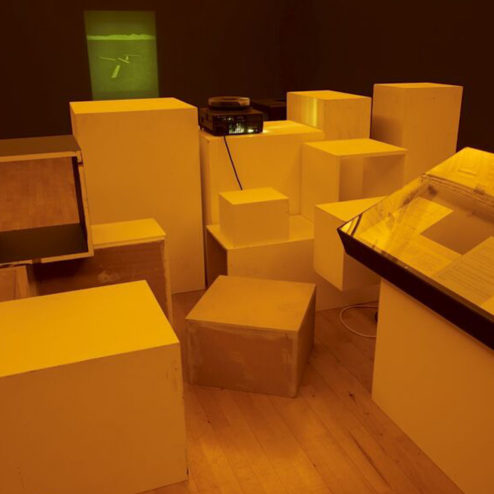
2008 | Single channel video, two channel audio, gel lighting, archival materials, various plinths. Commissioned by Richard Birkett and Mark Sladen for Nought to Sixty at the ICA London.
RICHARD BIRKETT | The artist has undertaken a period of research in the ICA London’s archive, focusing on two seminal events – the exhibition When Attitudes Become Form (1969) and the conference The State of British Art, A Debate (1978). Each connects to debates around art-making and organisation: Pierce presents both the practical remnants of institutional organisation, including redundant pedestals and archival documents; and the broader concerns of political organisation and protest through interviews and documentation, including video of a workshop where participants acted out gestures and recited quotes from bystanders at political demonstrations in the US between 1968-2008.
The project’s title refers to one such quote. With each location it changes, as does the selection of archival material displayed amongst ubiquitous stands from past exhibitions – borrowed from local organisations with ties to art-making, collectivity and self-governance. Central to Pierce’s work is a consideration of forms of gathering, both historical examples and situations that she initiates. How we speak about the political in art and what bearing a legacy of conceptual 1970s art practices has on a present moment are among the debates that Mary Kelly speaks about in an interview with Pierce, which is part of an audio track that also includes artists/educators Liam Gillick, Dave Beech and Adrian Rifkin.
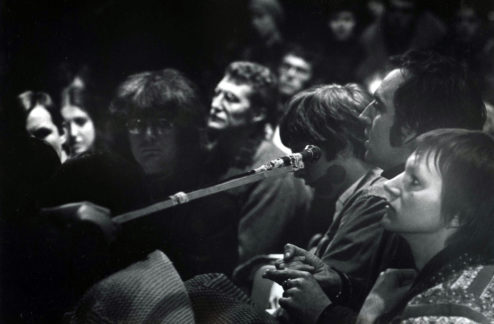
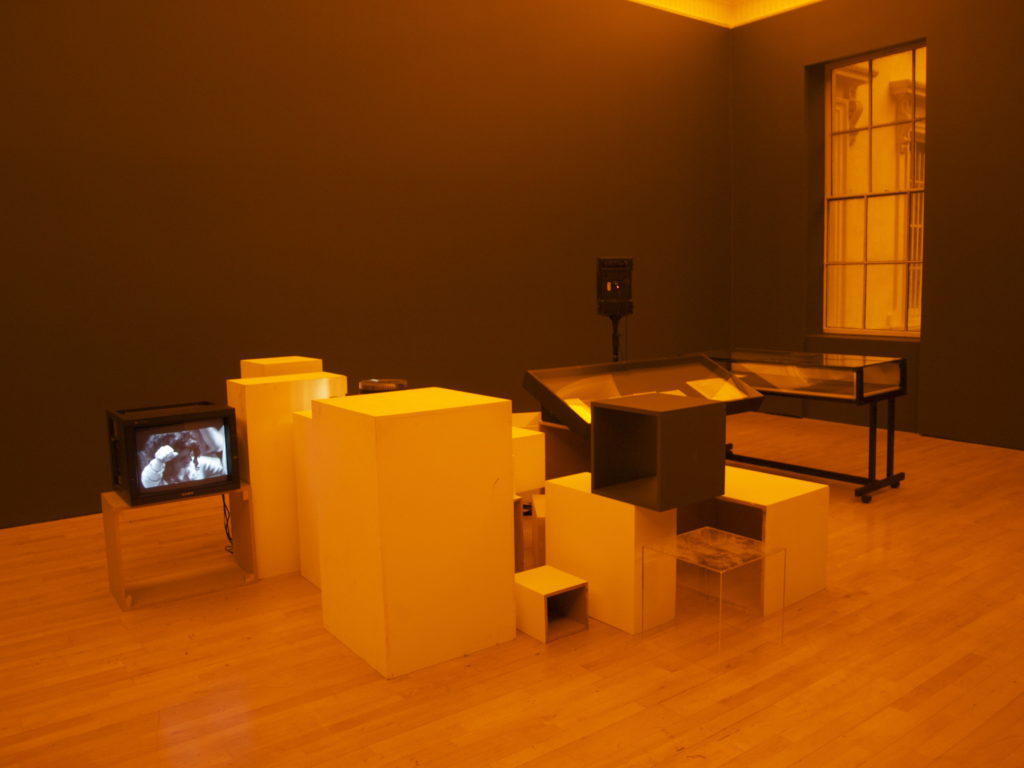
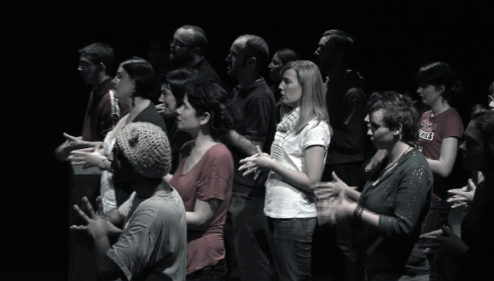
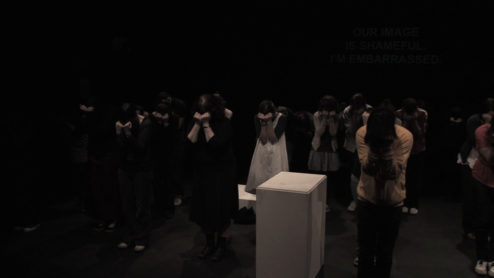
Every Exhibition at Every Institution
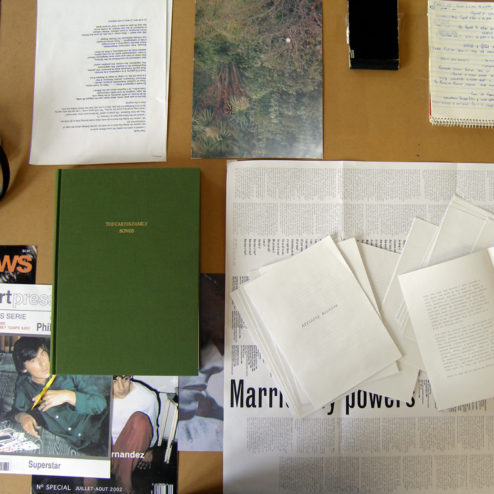
2007 | Three-person exhibition The Open End with Sarah Pierce, Falke Pisano, and Tue Greenfort. Curated by Axel John Wieder, Kunstlerhaus Stuttgart. Pierce re-presented selections from four projects: Affinity Archive, Monk’s Garden, Red Archive, and The Meaning of Greatness, which together infer multiplicity and repetition as the main discourse of the art institution. Presented on display tables fabricated in the house during Ute Meta Bauer’s time as Artistic Director.
AXEL JOHN WIEDER | The group exhibition Das offene Ende (The Open End) presents art works by Falke Pisano, Sarah Pierce/The Metropolitan Complex and Tue Greenfort, that purposely neither seem to have a beginning nor an end. They deal with intermediate stages of processes without predefined results. That way, they develop specific aesthetic and political paradigms. A substantial feature of the works is their openness towards creative production and presentation that flow into their meaning and the work methods of the artists.
Meaning of Greatness
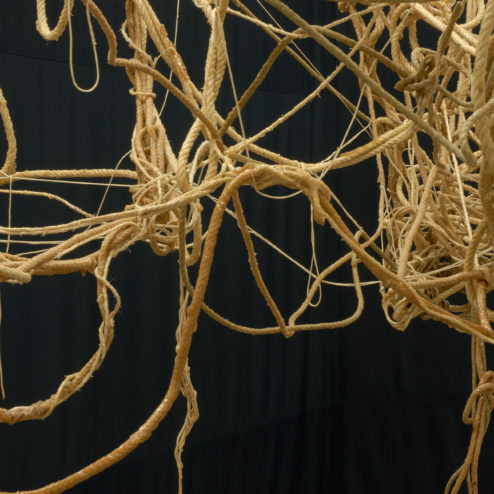
2006 | Installation (curtains, rope, archival materials, photographs from the SKC archive, Belgrade; letters from the May 4 Collection, Kent State University, drawings by Anne Guerry, test pieces by students from the University of Belgrade.) Commissioned for a solo exhibition at Project Arts Centre, Dublin. Curated by Grant Watson. Collection of Irish Museum of Modern Art.
Meaning of Greatness draws on Pierce’s own biography as an artist, her history and ‘progress’, along with art historical and counter-cultural references from feminism to modernism. The project in an ongoing interplay with notions of being an artist, friendship, and the personal and political legacies that form an art practice.
ANNE WAGNER | What does Hesse’s art look like? The question is simple–it sits docilely enough on the page–but answers to it obey more complex laws than might be assumed. (Another Hesse)
SARAH PIERCE | The work that Eva Hesse is best known for is a piece that she called ‘untitled’, ‘rope piece’, ‘the knot piece’. Since the work’s inception into Whitney Museum’s collection, its official title is Untitled, (Rope Piece) 1970. The date coincides with the year she died, the year Hesse began real work on Rope Piece. She exhibited it when she was alive, although for the most part it hung in her studio where she continued to work on it until her death, causing some to consider Rope Piece unfinished.
Over the years, the latex on the rope has significantly darkened and decayed, making the work of installation difficult. There is no reason (despite a brand of early-90s writing on Hesse’s work that claims the contrary) to understand decomposition as a quality that was at all compelling to Hesse.
In 2006, I remade the Rope Piece based on an extended caption written by Lucy Lippard relating to a 1970 pencil study by Hesse. It took several days working in the gallery.
Legacy and Revolution
Why Have There Been No Great Women Artists? In posing this question in 1988, Linda Nochlin cautions us (feminists) not to take the bait. Take pause! Before petitioning a list female names to add to the canon, consider, Why is it so difficult to retire the canon altogether?
The Cult of Genius
In Belgrade in 1971, the communist Yugoslav government handed a local student population its own art space to operate and programme. The following spring, the Student Cultural Centre (SKC) organized the first of what would become an annual April Meeting, which invited young artists and students from across Yugoslavia to gather and discuss the ‘expanded media.’ My research in 2006 into SKC’s beginnings and its legacy of April meetings, brought me to the studios of Zoran Popović and Raši Todosijević. They are among an echelon of artists identified with the experimental and international art world that defined Belgrade in the 1970s, and which revolved around the SKC. Each tells me about his work. Raši outwardly describes his art as “genius”. Zoran uses the word “unappreciated”, but I reckon he means genius, nonetheless.
Tests pieces/Peaceful protests
At Belgrade University’s Faculty of Art, I meet with the second and third year sculpture students. Looking around their studios, I am drawn most to the ‘test pieces’ — preliminary studies for future works that tryout an idea or test the properties of certain materials. I display the test pieces on discarded furniture collected from behind the building. On one table I place a bounty of black-and-white photographs from the SKC archive taken in the same gallery between 1972-1976.
Four Dead in Ohio
My college art teacher, Linda Lyke, was at Kent State University on May 4, 1970, the day the National Guard shot and killed four students during an anti-war protest on the campus. She tells me this while we are in Japan together in the summer of 1989 — the same summer the Chinese government killed protesters in Tian’anmen Square. I discover later that Lyke donated a dossier of papers to Kent State — condolences sent to the student government in the weeks following the deaths. In Kent State’s vast archive related to the shootings, I come across a photograph dated May 1, 1970 of people gathered on the hill at Victory Bell. It is a strikingly peaceful scene depicting about 100 students seated along the grass, their backs to the camera.
Knot piece, the ‘not’ piece
Instead of a canon, imagine a more affectionate past. Formative, unfinished, not yet art, not in the realm of the documentable.
Test Pieces
2006 | Archival materials from the SKC archive, Belgrade, various furniture, and test pieces by students at the University of Belgrade, Sculpture Faculty. Commissioned by Sandra Grozdanic for Test Pieces and Blend in Moments, a two-person exhibition with Alan Phelan, at the Student Cultural Centre, Belgrade.
Test Pieces draws on Pierce’s interests in student work and a ‘present’ student body, in this case, how these are played out through 1970s radical practices and contemporary models of art-making. She collaborated with SKC’s archivist Dragica Vukadinovi to explore material related to SKC’s beginnings in 1971. This research, along with a display of test-pieces contributed by art students from the Faculty of Sculpture at Beograd University propose a site of formative moments, not quite art, but not in the realm of pure documentation. During the week, Pierce used SKC as a base to renegotiate these histories in the present, filtering her ‘presence’ in the gallery through an accumulation of meetings and one-to-one conversations.
Concept of Documentation
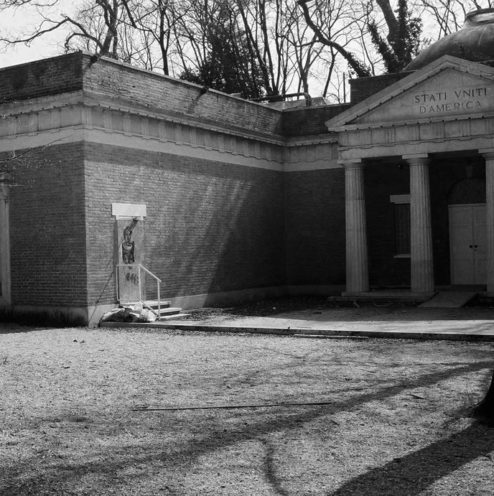
2005 | Photographs, zines and tables, canopy, stumps, mirrors with a specially commissioned wall text by Rene Zechlin. Presented to document The Metropolitan Complex’s representation in the Irish pavilion, Venice Biennale 2005. Glucksman Gallery, Cork.
DOCUMENTATION, OR REALITY AND TRUTH | The concept of documentation comes from the legal area. There, the document is a certification or a piece of evidence. The document is thus regarded as a representation of truth. Documentation and documentary practice, therefore, always have something to do with a search for or a representation of truth. Between the document on the one hand, and truth on the other, however, various levels are inserted which, with various methods, try to bridge the gap and which are also a field of activity for artistic strategies.”If a document, in the definition of the term, is ‘an object serving to identify a reality’ it stands in relation to a truth, the truth of representation. The concept of the documentary, on the other hand, stands in a relation to a point of view, an attitude.”(1) The document is part of a reality which is reconstructed by documentary procedures. Through the reconstruction in the form of making a connection between individual documents, reality can take on very different forms. The document therefore relates to documentation as reality to truth. Whereas document and reality describe what is factual, documentation and truth tend toward an interpretative statement. Dealing with the document with an eye to a reconstruction of reality or even a statement of truth is therefore always purposeful and thus burdened with the subjectivity of the point of view and the mode of presentation. This problem is the same in law and art, but it is dealt with employing different strategies. Whereas in legal proceedings, through the repeated juxtaposition of various modes of presentation an attempt is made to eliminate subjectivity as far as possible, in documentary procedures within art, subjectivity is either consciously employed or an attempt is made to side-step it in various ways. A couple of examples should make this clear.
The historical painting, for instance, is an artistic form of documentation which interprets and presents historical facts in an unambiguous way with a view to making a certain statement. When making a classification according to the degree of employment of purposeful interpretations, a further, particular form of documentation in the fine arts must, interestingly enough, be placed completely on the subjective side: the documentation of art itself. We know about forms of art tightly defined by time or space, such as performance or land art, mostly only through their documentation, which is often very far removed from an objective viewpoint. The documentation serves rather to complete the art work according to the artist’s intentions.
In both research practice and art, an archive avoids any purposeful interpretation of its contents. The archive is the neutral totality of documents which serve as a basis for an interpretation. The archive thus pretends to be a kind of pre-documentation and appears, paradoxically, in its lack of purposeful direction, to be closer to an objective truth. (However, setting up an archive already includes subjective processes of selection.) This objectivity, however, can only continue to exist on a symbolic level. Any use of the archive materials to form a statement inherently includes already an instrumentalisation and subjectivisation of the material.
A middle way between an apparently objective neutrality and a conscious instrumentalisation of subjectivity in documentary procedures is offered by the form of (the documentary) installation. Jan Verwoert compares this with Adorno’s concept of the essay. For Adorno, the essay counters the linear, objectifying thinking of science with another form of knowing which is based on grasping associatively arranged statements in going through a personal experience. Similar to the essay, in a documentary installation, individual documents are laid out and the viewer is called upon to make his or her own connections between the materials and to personally go through and understand the historical ambivalences. The installation thus opens up its topic not in the form of an argument, but rather communicates it as an experience and therefore could be described as an ‘essayistic installation’. The concern of essayistic documentation would be therefore to set up a necessary measure of formal coherence in order to make contents experienceable without reducing the complexity of the object through the form of presentation. (2)
RENE ZECHLIN | Cork 2005
(1) Pascale Cassagnau: Future Amnesia (The Need for Documents), in The Need to Document Zurich: JRP Ringier 2005 p. 167.
(2) Jan Verwoert: Dokumentation als kuenstlerische Praxis, springerin 3, Wien, 2003 p. 28.(Rene Zechlin, “The Concept of Documentation”, wall text commissioned by Sarah Pierce for her installation in Ireland at Venice, Louis Glucksman Gallery, Cork 2006.)
Monk’s Garden
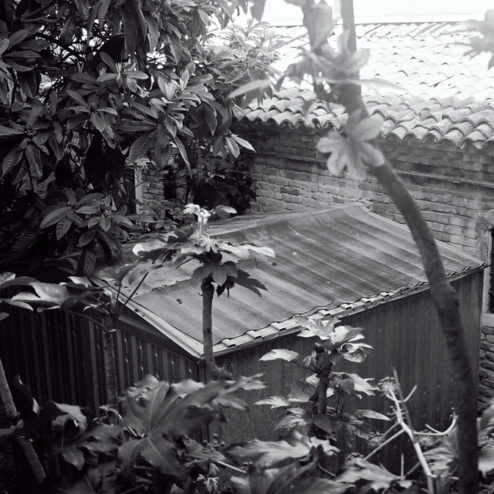
2005 | Site specific installation with mirrors, stumps, a canopy and a banner, with over 400 contributions from the Forgotten Zine Library, in the Scuola di San Pasquale in Venice’s Castello district, commissioned by Sarah Glennie for the Irish national pavilion, 51st Venice Biennale. Opening performance in the garden by Karl Burke.
SARAH PIERCE | A few months ago, a negotiation took place on behalf of the Padres di Convento San Francesco della Vigna and myself, to arrange access to the garden adjacent to the Scuola di San Pasquale in Venice’s Castello district, the site of Ireland at Venice 2005. The Fathers lease the garden for storage, as well as using it as a back entry to a small office next to the main building. The agreement: To open the garden gate to the public for la Biennale di Venezia.
The garden has both changed and retained elements I recall from a brief visit two years ago. Someone has built a corrugated shed in the centre. Three large stumps, placed irregularly, garnish the area. Ultimately, I realise these are part of a collection; 17 stumps of different sizes randomly occupy the garden from beneath fig bushes, beside planters, and along the path that leads to the stairs. This odd intervention evokes Robert Smithson’s Hotel Palenque, scripted as a lecture in 1972 for architecture students at the University of Utah. The work’s accompanying sequence of slides documents the hotel in Mexico and the unsystematic add-ons and repairs that repeatedly reconfigure its grounds. The garden is not one person’s vision. It is several, altering, autonomous moments of attention, at varying stages of progress, underway but unfinished. This multifarious involvement can happen where ‘site’ is available, up for grabs, not fixed historically or contextually predetermined.
Green space is rare in Venice, yet squatting is legal, and I am told by an architect living here that the locals call squats ‘community centres’. I wonder what it means to represent Ireland at Venice. I’m not Irish. In Dublin squatting, or the unauthorised occupation of vacant space, is illegal. Along the Grand Canal in Dublin in a neighbourhood called Rialto, Dunk, a young architecture student and activist has started a movement to ‘green’ the city by planting community gardens in derelict industrial plots. Eventually, these will connect to create a green spine through the city. In recent correspondence he writes, “The Grand Canal is under threat due to recent construction of the Kildare motorway bypass, which has affected the Pollardstown fens water levels, which is the source of the Grand Canal.”
Dunk introduces me to a group who occupy a warehouse along the DART, and who organize Sunday bike-workshops, screenings, and Vegan meals. There I meet Ciaran Walsh, an artist and also the co-founder of the Forgotten Zine Library, an archive of several personal collections. We make plans to transport 429 Irish publications, both zines and freesheets, from the library to Venice to announce a pavilion of sorts in the garden. I record the addresses of the people who made them. Most of the addresses are houses in the suburbs surrounding Dublin.
A majority of the zines in the Forgotten Zine Library are made by people in their 20s now, born in the late 70s, and refer to the DIY ethos of punk, anarchy, and eco-living. I wonder about male artists in my generation whose art references a group who came before them. Ed Ruscha, Bruce Nauman, Robert Smithson, Richard Serra, Dan Graham, Gordon Matta-Clark. There is acertain serendipity between the ages we are now, and the ages of these artists in the decade we were born. They are figures in the landscape, in black-and-white photographs taken in the American desert, in dungarees. Ed Ruscha is representing the U.S. this year in the United States pavilion. He describes his work as a collection of facts and readymades. It strikes me how loaded with politics one of his seminal pieces, Twentysix Gasoline Stations made in 1963, is today.
Inscribed on the exterior of the Irish Museum of Modern Art in Dublin is a work by Lawrence Weiner: WATER & SAND + STICKS & STONES.
On my last day in Venice I visit the Giardini. It is April and only three countries have begun work on their pavilions. Some men are cleaning Japan with an industrial machine; Austria is surrounded by stacks of timber; Australia’s roof is getting a hose-down. The rest of the place looks like wasteland. Vinyl text on France, leftover from the architecture biennale tells about sustainability and future cities. The U.S. pavilion has boarded windows and graffiti on the entrance.
Around 1969, Smithson did a series of Mirror Displacements along the Yucatan. He photographed each one and consecutively documented them in narrative texts. He wrote,
Time is devoid of objects when one displaces all destinations.
I often think about this sentence. Try rearranging it.
Destinations are devoid of time when one displaces all objects.
or
Displaced objects, devoid of time.
or
One time, devoid of objects, all destinations.
Incidents of travel arrive in Venice in the Monk’s Garden.
Caged Archive
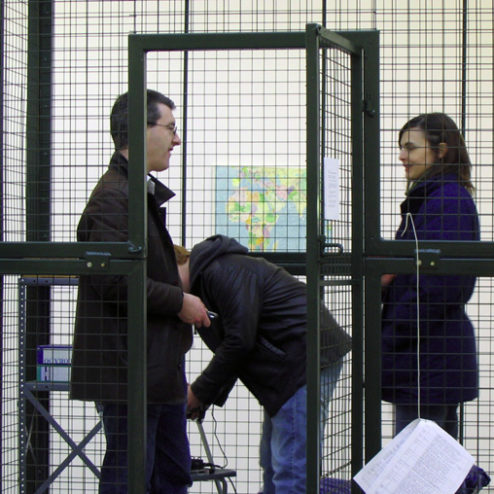
2005 | A collaboration between Mark O’Kelly and Sarah Pierce on the occasion of Mark O’Kelly’s solo exhibition In Fashion at Limerick City Gallery of Art, Limerick.
For Caged Archive Pierce worked directly with one artist, Mark O’Kelly, in the context of his solo exhibition. Playing on Bruce Nauman’s Mapping the Studio (Fat Chance John Cage) 2000, Pierce and O’Kelly designed a system for viewing materials collected from the artist’s studio. Pierce worked with O’Kelly’s archive to create a written index to the artists primary resources. The formal structure of Caged Archive suggests Nauman’s gallery chambers, and directions on the cage mark the collaboration between Pierce and O’Kelly as a ritualised giving over of materials in order to make present what is usually left behind.
SARAH PIERCE | How to dramatize the consciousness of viewing
Design and fabricate a cage suitable for two people to stand in and move around.
Place the cage in an exhibition space.
Select items from the artist’s archive (source material, notes, newspaper clippings, magazines, sketches, letters, Xeroxes).
Place these inside the cage.
List and annotate items using comments and notes.
Equip the cage with suitable furnishings and fittings.
Periodically enter.
Allow the archive to reveal hidden truths.
Paraeducation Department
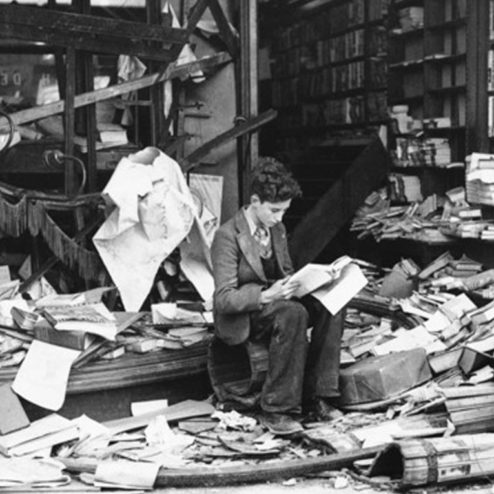
2004 | An ongoing collaboration with Annie Fletcher, produced through a series of reading groups and a reader. Commissioned by With de With/TENT for Tracer, Rotterdam. Image | Reading among the ruins, London 1940.
IVAN ILLICH| Most learning happens casually, and even most intentional learning is not the result of programmed instruction.
NOAM CHOMSKY | You have to be able to knock ideas off of other people and hear them get beaten down in order to find out what you actually think. That’s learning as distinct from indoctrination.
NOVEMBER GRUPPE | We feel young, free and pure.
SARAH PIERCE and ANNIE FLECTHER | As a counter balance to debates that occur within institutional and educational contexts that hinge on a distance between speakers and listeners, together we will produce an ethics of group exchange, where the purpose of dialogue is to discover common points of reference as well as to discover what the terms outlined in a particular text mean to us, the people in the room on a given day.
Paraeducation has no agenda other than to gather and reflect. It values thinking as an act in itself. We set forth without a destination, through a permissiveness that allows for u-turns and diversions along the way.
DOWNLOAD | The Paraeducation Reader
Red Archive
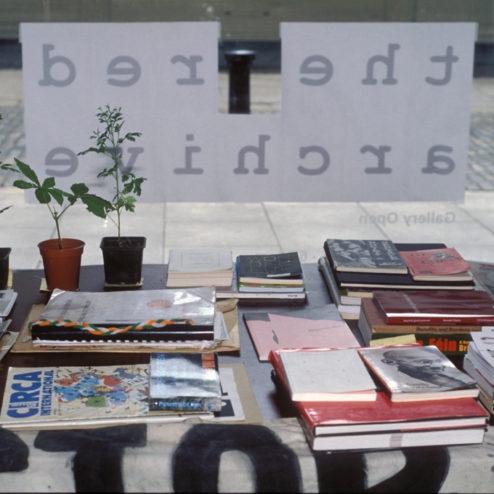
2004 | Archive in the lobby of Project Arts Centre, Dublin. Launched with a special broadcast of Ultra-red’s MayDay.
Part personal anthology, part resource centre the red archive includes materials from individual artists, curators and institutions that inform, complicate and represent the relationship artistic practice and political action. As a system to accumulate matter that both informs and represents a variety of strategies in artistic practice, the red archive is a place to think about art as a political prospect.
FÉLIX GUATTARI | At the very moment when we are formulating something that we think is right, when we take up a position in the name of its presumed efficacy, it is necessary for us to preserve a kind of ‘passage to the other,’ an acceptance of singularity, and also a calling into question of one’s own certainty.
SARAH PIERCE | The value system of a city’s discourse, that prefers certain social practices to others, reinforced by art institutions, their funders and perhaps more remarkably by artists through art they make. Red Archive is about trying different combinations of inclusion as a way to reposition sites of dissemination as sites of value production. Here, the contribution to the institution is an open refusal of the politics of representation. How might this transform into a politics of experimentation, of risk, of open systems, and how a decision to stop, to resist, to avoid practices of complicity might become a way to affirm relationships that propose artistic practices as practices of subversion.
SEE ALSO | Paper No. 6
Archivo Paralelo
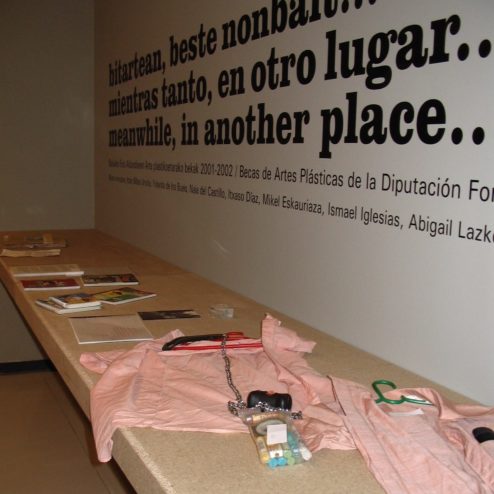
2004 | Archive presented in Meanwhile in another place…, Sala rekalde, Bilbao. Curated by Leire Vergara. Archive design by Gorka Eizagirre. With Miren Arenzana, Itziar Bilbao-Urrutia, Yolanda de los Bueis, Naia del Castillo, Itxaso Díaz, Mikel Eskauriaza, Ismael Iglesias, Abigail Lazkoz, Erlea Maneros, Marina Mendieta, Isabel de Naverán and many others.
Within the framework of the exhibition, Archivo Paralelo (Parallel Archive) develops a new project that corresponds to the logic of thinking about art production as an ongoing process. Installed as part of the exhibition Meanwhile, in another place…, Archivo Paralelo hosts contributions from different people involved in the exhibition. The invitation to contribute is given to the participating artists, the curator of the exhibition, the director and curator of the institution and the administrator of the institution.
Invitation to Archivo Paralelo
The parallel archive is a space within the exhibition to display materials related to cultural production. Some items in the archive relate to the Becas y Ayundas de la Diputación Foral de Bizkaia. Others relate to processes and relationships, dialogue and research connected to exhibitions in general.
The archive consists of contributions from artists in this exhibition, the curator, and the staff of the cultural offices in Bilbao and sala rekalde. It also includes items from people working outside of Bilbao.
Anyone wishing to contribute to the archive may do so. This invitation may be passed onto others. Through the parallel archive a side of cultural work is made visible through the activity of those who contribute.
The Parallel Archive : Premeditated interruptions and Punctual collaborations
SARAH PIERCE | Meanwhile in another place… (catalogue essay)
Last August, Leire Vergara approached me about developing a parallel activity to an exhibition that she was curating at sala rekalde. She explained the premise of the exhibition, that it involved working with 11 artists who received the Becas y Ayundas between 2001-2002, and her interest in exploring this context though various platforms that would open the exhibition up, both discursively and constitutively, to multiple inputs.
The structure of the Becas y Ayundas provided a starting point to think about how artistic production circulates, how institutions imagine artistic production in relation to cultural investment, and how to locate artistic research within the temporal visibility of an exhibition. The Becas y Ayundas is a grant that supports artistic creation in the province of Vizcaya as part of the region’s cultural management; 4-5 artists receive the award each year. At the moment, the Becas y Ayundas is a one-off grant that may be used to stay in Vizcaya, or to travel to another country. This offers a point of departure to think about how other scenes (in Madrid, New York, London, Los Angeles) feed-back into the image of a particular scene in Bilbao, or the Basque scene in general.
In late September, I visited Bilbao and Leire and I spent most of our time intensively developing various lines of inquiry that might shift the syntax of the exhibition. These meetings led us to more closely consider the exhibition as a participatory system and to creatively imagine a space within or through the exhibition that would introduce parallel or simultaneous potentialities beyond simply presenting the work of 11 artists. What Mikel Eskauiaza humorously referred to as a ‘freak show’ was the arbitrary assembly of artists who may or may not have anything in common other than the fact of receiving the Becas y Ayundas.
In allowing for a parallel space to form within the exhibition, we felt it was important to keep the parameters of giving as open as possible while acknowledging the inter-connectivity of the institution, the curator, the artists and the audience. Anyone wishing to contribute to the archive could drop off or send materials to sala rekalde. Sala rekalde’s receptionist would double as archivist, taking in contributions, cataloguing them and adding them to the archive throughout the course f the exhibition. Over two months the archive would grow and its meaning would shift depending on an ever-evolving accumulation of individual contributions.
Without asking for specific items, and leaving the will to contribute up to an individual’s desire to do so or not, how would what we were now calling the ‘Parallel Archive’ make use of relationships borne through exhibitions by creating a social space where the institution/the curator/the artist/the audience all inter-relate? How would we address the dynamics of power, inclusion and exclusion embedded in these relationships? Would the particularities of participation surrounding the archive re-inscribe or reinvent our relationships to each other?
The archive, as a diagram of power, presents for us the possibility of social and artistic intervention, to represent and identify relationships, players, and forces that are often veiled by exhibitions. As a participatory process, the archive represents two sides of artistic production: one physical, local, and communal, the other ambient, international, and dispersed. Both offer a range of representations and interpretations that perceive the complicated relationships that arise between artists, institutions and cities.
In the Parallel Archive are the machinations of exhibitions; each contribution represents an exchange, and while elements of this exchange are made visible, parts remain hidden. The archive is as limited by these contributions as it is expanded. This is not about claiming ‘transparency’ through public access to the private. It is about places where the public and private meet, where accumulation reproduces experiences of reflection, where action leads us to other relations, economies, interactions, geographies, etc., where actual relationships between institutions, curators, artists, and audiences portray real energies, where exhibitions are shared territories and our collective input and intensified participation determine the terrain.
Bilbao 2004
St. Pappins Ladies Club
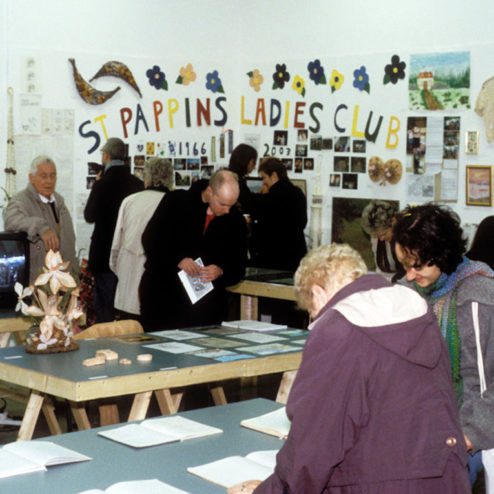
2003 | Archive of the St. Pappin’s Ladies Club (1966-2003) in Artists/Groups, Project Arts Centre, Dublin. Curated by Grant Watson.
Artists/Groups
SARAH PIERCE | In the spring of 2002, I met the St. Pappin’s Ladies Club in Ballymun. In hearing about their history, I proposed to present their Club memorabilia in public as The Metropolitan Complex’s participation in the exhibition Artists/Groups. Their archive represents a chronicle of group activity from 1966-2003. In the gallery were Club minutes, personal mementos, craftwork, community newsletters, group photographs, video documentation, and individual artworks made by Club members as recently as 2003.
The Club and its output leads to questions about what constitutes an artist group, and what parameters surround artistic production. The systems that describe artist groups, such as establishing a peer network, working outside of institutions, and responding to shared circumstances, can be found in the St. Pappin’s Ladies Club. The Club was formed in 1966 (in the same year artists in Dublin set up Project). Its members are among the first women who moved to Ballymun in the 1960s when the community there had little to offer young mothers and working women. Isolated from the rest of Dublin, and with no official context in which to work, the women joined together. They co-opted their name from the local parish where they first met and over the past three decades the Club has met regularly on Monday nights. On November 10, 2003 an open meeting at Project celebrated this tradition.
Open House (Just Past)
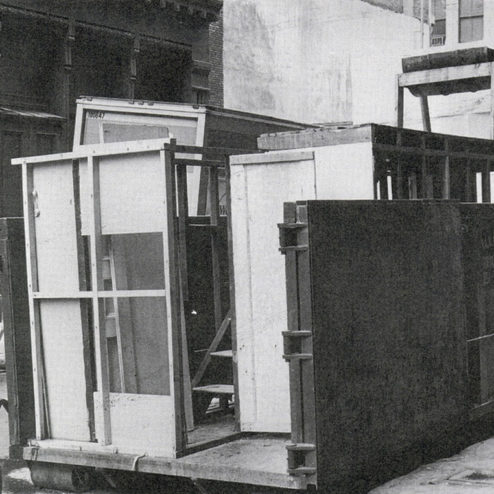
2003 | Screening presented by The Metropolitan Complex. Commissioned by Mark Garry for the Dublin Fringe Festival. Image | Film still. Open House, Gordon Matta-Clark, 1972.
SARAH PIERCE | Instead of making a new artwork, present a work previously made by another artist. In 1972, Gordon Matta-Clark staged an installation and performance in an industrial waste container on Greene Street in New York. Open House is the filmic document of this event. In the vein of much of Matta-Clark’s work, Open House invokes an urbanism as the analogue of architectonic memory, finding in the discarded in-between spaces moments of clarity. Open House has never previously been screened in Ireland. Its presentation at IMMA inside an unused shipping container is an historical moment of sorts – one that occupies a temporal proximity between what is happening and what has already happened…
Affinity Archive
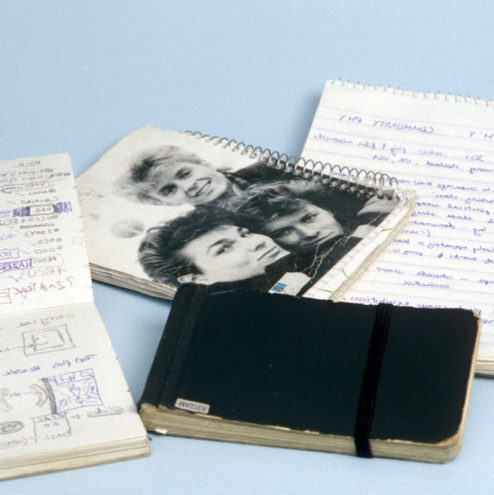
2003 | Archive and exhibition. Studio 16, Broadstone Studios, Dublin 2003. Accession numbering system and guide developed by Alan Phelan with accompanying Microsoft Access interface for PC. Image | Alan Phelan AA01 (notebooks c.1986-90).
After presenting the first Metropolitan Complex paper as part of the group exhibition Permaculture (Project Arts Centre, Dublin) Sarah Pierce initiated the Affinity Archive, an collection of items donated by artists and curators related to the conditions of making work.
Bik Van der Pol, Dave Hullfish Bailey, George Baker, Stephen Brandes, Yvonne Buchheim, Matthew Buckingham, Gerard Byrne, Cabinet, Emilie Clark, Oliver Comerford, Brian Conley, Aileen Corkery, Emma Crean, Ann Marie Curran, Pip Day, Carola Dertnig, Jacob Fabricius, Annie Fletcher, Fintan Friel, Mark Garry, David Godbold, Frances Hegarty, Philippe Hernandez, Finola Jones, Martine Kaczynski, Slavek Kwi, Benno Löning, Marion Lovett, Paul Maye, Kieran McBride, Ronan McCrea, William McKeown, Madeleine Moore, Paul Murnaghan, N55, Paul Nugent, Mark O’Kelly, Niamh O’Malley, Paul O’Neill, Alan Phelan, Garrett Phelan, Linda Quinlan, Ronan Sharkey, Andrew Stones, Rachael Thomas and Karen Kilimnik, Corban Walker, Walker and Walker, Grant Watson, Grace Weir, Lee Welch, and Jenifer Youell.
Invitation to Affinity Archive
Dear…
I’ve been thinking about what we do, what it means, how, for whom and why it happens. Much of this includes personal exchanges that surround cultural work. My attachment to your work, for example.
Our relationships are a form of dissemination. They are our shared condition. I’d like to ask you to take part in a simple project I’m planning in my studio in Dublin. Please send me something that describes the conditions surrounding your work, something collected, constructed, written or sourced, a work-in-progress, invitation, article, book, photograph, sketch, letter, poem, object, manifesto, video, or CD. Relay an experience or a conversation, something anecdotal, informal and attached.
Other people will see what you’ve given and if they want to they can add something too.
This is how we’ll build an Affinity Archive.
Love, Sarah
Spaces Between and Beyond
DECLAN LONG | Ireland at Venice 2005 catalogue essay (excerpt) […] The Metropolitan Complex has emerged as a committed collaborative endeavour; expansive in its interests, varied in its methods. Central to its contribution has been a determined effort to facilitate conversations that might involve interrogation of naturalized, ‘common sense’ relations, attitudes and practices within a local scene, an aim which has been pursued by (among other things) the staging of informal roundtable discussions addressing such subjects as activism, art and politics, varieties of curatorial practice, and constructions of the ‘local’ in relation to the ‘international’. The published transcripts of these conversations are widely acknowledged as a significant, independently produced, record of recently shared pre-occupations regarding the conditions for contemporary art practice.
Through collaborative ventures of this kind, The Metropolitan Complex has succeeded in creating much needed space for productive, critically-reflexive, encounters. The identification, examination and transformation of shared circumstances has been fundamental to many such local interactions and collaborations in recent years, and another representative Metropolitan Complex project in this respect would be 2003’s ‘Affinity archive’. This took the form of an open-ended exhibition of eclectic ephemera and marginalia relating to the practices of a diverse group of artists, curators and writers. The creation of this archive of unlikely material began with an invitation being offered to twenty-four local and international figures (among them Ronan McCrea, Grace Weir, George Baker and Matthew Buckingham) to contribute something – anything – that bore a significant, if not perhaps immediately apparent, relevance to the circumstances or tendencies of their work.
The underlying aim was, as Pierce has noted, ‘to see if there was a way to make a collection out of the communal, conversational, and incidental – the affinities or sympathetic moments of interaction that take place in and around art.’ The collection was, therefore, a compendium of the miscellaneous materials that have a bearing on cultural production – assorted texts, photographs, drawings, even a recording of a Thin Lizzy track – all of which were placed on public display in Pierce’s Dublin studio. This decision to use the studio space as a situation for alternative forms of ‘making’ implies, of course, a critique of romantic models of solitary artistic process (challenging the traditional ‘function of the studio’ as, in Daniel Buren’s formulation, ‘a unique place where the work originates’8 ) and, furthermore, Pierce has suggested that the project evolved ‘into an analysis of the ways that works of art are handled and displayed’. But the ‘Affinity archive’ is arguably most memorable for its having, as Pierce terms it, ‘tested the affinities that exist within a local situation’ – and in this respect it can be viewed as a part of a loose continuum or broader pattern of exhibitions, practices and artistic programmes which have had a similar investment in ‘testing affinities’ in a variety of ‘local situations’.
Metropolitan Complex Papers
A series of self-published papers and once-off special editions. Printed in limited runs and distributed for free.
SPECIAL EDITION 10 | Dublin
2021 | Zine Shelter, Bread and Freedom. Commissioned by Temple Bar Gallery +Studios for the exhibitions Wayward Eye (2021). With texts by Grace O’Boyle, Donna Rose, and Sarah Pierce. READ | Shelter Bread & Freedom pamphlet.
Paper No. 18
Roundtable Discussion: Bassam El Baroni, Pip Day, Lívia Páldi, Milica Tomić, and Sarah Pierce. On Tuesday 15 December 2020, the following conversation took place over the video conferencing service Zoom between Helsinki, Berlin, Vienna and Dublin. There was no audience present. The conversation was recorded and has been transcribed and edited. Commissioned and produced by Project Arts Centre, Dublin with support from the Arts Council and Dublin City Council. DOWNLOAD | Paper No. 18
SPECIAL EDITION 09 | Los Angeles, Vancouver, Dublin
2020 | Commissioned by Temple Bar Gallery +Studios for the Dublin Art Book Fair 2020. Artist Sarah Pierce invited artists Tammy Rae Carland and Kathy Slade to have a conversation about zine culture and underground publishing. VIDEO | One Love Leads to Another: Methodologies, Legacies, and Self-determinations, a conversation between three artists.
SPECIAL EDITION 08 | Hobart
2013 | Commissioned by Paul O’Neill for Our Day Will Come at the School of Creative Arts, University of Tasmania. Four A0 posters distributed on campus via a series of performances with students at the school.
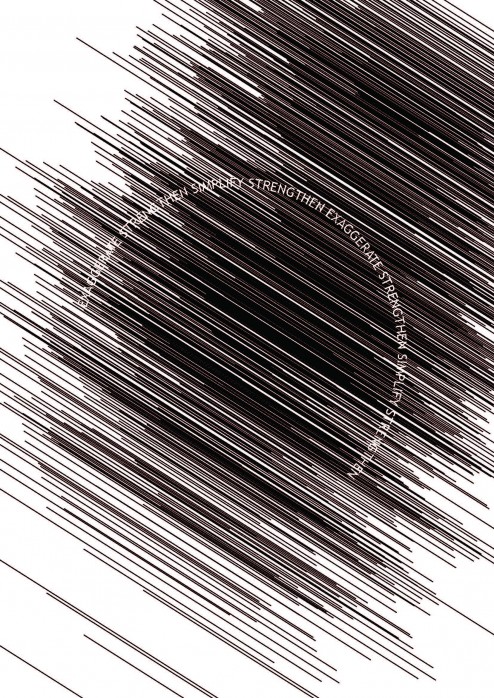
Paper No. 17
An extended visual essay on the artist Gordon Matta-Clark’s Conical Intersect (1975). Printed in France on the occasion of Les rendez-vous du Forum Session 4 : Fun Palace at the Centre Pompidou, Paris 2010. Curated by Yann Chateigné Tytelman, Tiphanie Blanc and Vincent Normand. Not available for download.
SPECIAL EDITION 07 | Afterall Online
2009 | Commissioned for Afterall Online by Afterall Journal and the Irish Film Institute Archives.
SARAH PIERCE | The Archival Fourth Dimension (excerpt). Amongst the Irish Film Archive’s vast holdings of Irish cinema, which itself constitutes a partial canon, are the Amharc Éireann newsreels, produced by Gael Linn between 1957 and 1964. The Amharc Éireann (‘View of Ireland’) newsreels, broadcast in Irish without English subtitles, publicised current events in Ireland and were shown in cinemas throughout the country on a monthly and bimonthly basis. The newsreels’ aim, or dominant purpose, was to promote the Irish language and its heritage as an expression of Irish identity. While viewing the newsreels, I began to consider their ‘archival’ fourth dimension – what they reveal about how people in post-colonial, pre-Troubles Ireland gathered, from sporting to protest events, from religious mass to fashion shows, and how these gatherings convey a more complex story about nation, history, territory and language than we, in Ireland, are accustomed to telling.
For this online edition of Afterall Online Pierce selected four Amharc Éireann newsreels from the Gael Linn collection, using the search term foreigner.
VIDEOS | Afterall Journal | Online
Paper No. 16
A compilation of transcribed discussions, interviews and texts printed on the occasion of All That is Solid Melts Into Air, Mechelen 2009. With Grant Watson, Yael Davids and prisoners from the Mechelen city prison; the Transit Gallery reading group; interviews in Mechelen City Archives; and texts by Matthew Buckingham, Maurice Blanchot, Charles Henri Ford and Parker Tyler, Monika Szewczyk, and Colm Toíbín. Not available for download.
Paper No. 15
Roundtable Discussion: Daniel Jewesbury, Caoimhín Mac Giolla Léith, Declan Long (Chair), Rachael Thomas, and Sarah Pierce. On Monday 28 January 2008, the following conversation took place at the National College of Arts and Design in Dublin. Declan Long invited the participants to have a roundtable discussion on issues around contemporary art and national representation. There was no audience present. Available 5 December 2008.
DOWNLOAD | Paper No. 15
Paper No. 14
A limited edition CD made on the occasion of Underground curated by Dennis McNulty and Peter Maybury at Road Records for Darklight, Dublin 2008. Sounds from: Angela Bulloch, Heri Dono, Max Eastley, Brian Eno, Stephan Von Heune, Ryoji Ikeda, Philip Jeck, Christina Kubisch, Thomas Köner, Chico MacMurtrie, Christian Marclay, Katarina Matiasek, Russell Mills, Mariko Mori, John Oswald, Lee Ranaldo, Scanner, Paul Schutze, and Ian Walton. First edition of 10 CDs printed in Dublin 2008. CD not available for download. DOWNLOAD | Paper No. 14
SPECIAL EDITION 06 | Rome
A4 flyer produced for the Unfair fair, Rome 2008. Curated by Cecilia Canziani and Vincent Honoré. Redistributed in Invisible Publics at The Townhouse Gallery, Cairo. Curated by Sarah Rifky. Image | Studentski Kulturni Centar, Beograd c. 1972. Courtesy SKC Archives, Belgrade.
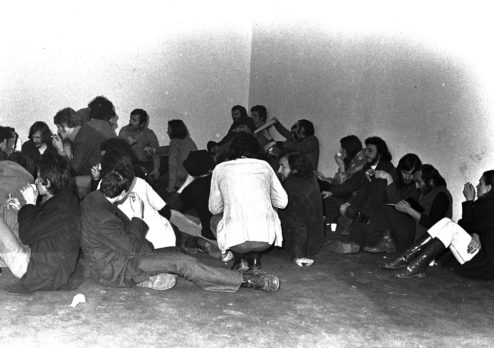
REVERSE | By now we share an affinity…although we haven’t met. It appears we are aligned, through metropolitan associations that imply shared sentiments. Which is how we arrive. In this form. Implied and implicated,together. But amidst this grass-roots solidarity, enacted through D.I.Y. aesthetics, low production values, necessity and good will, mustn’t we attempt, at the very least, to switch around the axioms that position us ‘here’ and not ‘there’? Free markets profess a sense of morality, and then we steep our opposition in equally moralising behaviors that barely dissent, barely deviate, barely transcend. We imagine rebellion as the refusal to assimilate. We measure resistance through diminished returns. Failure is good! We fail! We are good! The logic of our battle cry replaces one value system with another. And this makes it difficult to hone in on issues that are more complex.
Capitalism, like other oppressions, is violent precisely because it is difficult to lose. It transmits through our attachments.
Paper No. 13
In a diversion from its usual format, Paper No. 13 presents a text written in 1959 by the American sociologist C. Wright Mills. Chapter One: The Promise is the entry point into Mills’s seminal work, The Sociological Imagination. In it he calls for a mindset, a way of looking at the world that sees links between the private problems of the individual and important social issues. Within this intricate range of connections individual life happens, societies occur. Original issue available only through OEI, Stockholm 2007. Not available for download.
SPECIAL EDITION 04 and 05 | Dublin
Meaning of Greatness zine published on the occasion of the exhibition at Project Arts Centre, 2006. Second edition published for Feminist Legacies at MuMOK Antwerp. Texts selected by Sarah Pierce and Grant Watson. Charles Henry Ford and Parker Tyler The Young and Evil (1933) from Chapter 11: Love and Jump Back (Metronome Press 2005); C. Wright Mills The Sociological Imagination (1959) from Chapter One: The Promise; Anne Guerry Pierce diary entries (May 1977); Grant Watson from “Ella, Cornelius, Bashai, Martha and Me: an Archive of Common Names” (2004); Ursula Le Guin from The Dispossessed: An Ambiguous Utopia (Harper & Row 1974); Ed. Tara Herbst and Nicholas Siepen Assembly International, Berlin (September 2005); Yukio Mishima two excerpts from “Patriotism” (1960) in Death in Midsummer and Other Stories (New Directions Publishing Corporation 1966); Allen Ginsberg Guru (Primrose Hill, May 1965) and On Neal’s Ashes (August 1968); Dr. William Pierce from “Allen Ginsberg Media Model for America’s Youth” (May 1997); Leo Bersani “Homos” (Harvard University Press, Cambridge Massachusetts, 1995); Eds. Berhard Schwenk and Michel Semff Pier Paulo Pasolini 1922 – 1975: Life Work Myth (Hatje Catz, 2006); Lucy Lippard from Eva Hesse (New York University Press 1976); Eva Hesse list from her notebook (1965); Anne M. Wagner from “Another Hesse” (1994) in Eva Hesse (MIT 2002); Sarah Pierce Notes on the meaning of greatness (2006). DOWNLOAD | The Meaning of Greatness

Paper No. 12
A limited edition CD printed on the occasion of Our Day Will Come, a project by Paul O’Neill for Nekromantic at Zoo Art Fair, London 2006. Presented by temporarycontemporary. Peter Lewis, Elizabeth Price, Craig Smith, Maria Fusco, Jason Coburn. Between 17 and 20 May 2005, a series of one-to-one conversations took place in Redux, London. Sarah Pierce invited each participant to have an informal discussion in the context of the exhibitionCoalesce/Remix, curated by Paul O’Neill. There was no audience present. First edition of 40 printed in Dublin 2006. CD not available for download. DOWNLOAD | Paper No. 12
Paper No. 11
Roundtable Discussion: Jesse Jones, Ken McCue, Sally Timmons, Wes Wilkie and Sarah Pierce. On Thursday 6 October 2005, the following conversation took place in the Moore Street Lending Library in Dublin. Sarah Pierce : invited the participants to have an informal discussion. There was no audience present. Original back issues available. DOWNLOAD | Paper No. 11
Paper No. 10
Roundtable Discussion: Fergus Kelly, Dennis McNulty, Garrett Phelan and Sarah Pierce. On Wednesday 27 April 2005, the following conversation took place in studio 27 of Temple Bar Gallery in Dublin. Sarah Pierce invited the participants to have an informal discussion. There was no audience present. Original back issues available. DOWNLOAD | Paper No. 10
Paper No. 9
In Conversation: Ciaran Walsh and Sarah Pierce. On Tuesday 5 April 2005, Sarah Pierce invited Ciaran Walsh to have a conversation in the garden of the Scuola di San Pasquale in the Castello district, Venice. There was no audience present. Note: This is an insert for Paper No. 10. Original back issues available. DOWNLOAD | Paper No. 9
SPECIAL EDITION 03 | Vienna
2005 | Two panels for a rolling board, Vienna and Salzburg 2005. Curated by Walter Seidl and Ursula Maria Probst. Presented as part of EUROPART: contemporary art from Europe, this work takes up a billboard created in 1992 by Felix Gozales-Torres in New York City. In her bedroom in Dublin, Pierce restaged Torres’ photograph, based on her memory of the work. 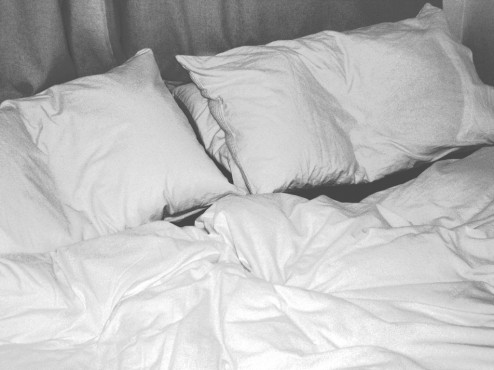
Three dear friends of mine live in Vienna. We met 10 years ago in New York. In 1992, the artist Felix Gonzales-Torres made a photograph of a double bed, with two pillows and white sheets. It appeared on 24 billboards throughout New York City. In an interview he said, Our intimate desires, fantasies, dreams are ruled and intercepted by the public sphere. Their names are Barbara, Rike, and Carola.
Paper No. 8
Roundtable Discussion: Rachel Urkowitz, Gareth James, Martine Kaczynski, Jimbo Blachly, Graham Parker and Sarah Pierce. On Saturday 9 October 2004 the following conversation took place in the studio wing of PS1 MoMA in New York. Sarah Pierce invited the participants to have an informal discussion. There was no audience present. Original back issues available. DOWNLOAD | Paper No. 8
Paper No. 7
In Conversation: Sarah Pierce interviews Sarah Glennie and Adam Sutherland. On Friday 3 September 2004, the following conversation took place between Sarah Glennie’s house in Irishtown, Dublin and the Grizedale Arts office in England’s Lake District. Sarah Pierce invited Adam Sutherland and Sarah Glennie to have an informal discussion about Romantic Detachment, a project based in the studio-wing of PS1 between 4 October and 7 November 2004. Sarah Glennie and Sarah Pierce spoke to Adam Sutherland over the phone. Special layout and printing by Simon and Tom Bloor. Out-of-stock.
For Romantic Detachment Pierce conducted a three-way interview with curators, Sarah Glennie and Adam Sutherland as part of an ongoing series of papers. Poised on the closure of PS1’s studio program, Pierce imagines Romantic Detachment as a story of two Brit’s who hoodwink their way into the museum, flashing business cards and dressing funny. The cunning duo conceal their (curatorial) strategy in a series of swindles, scandals and spectacles that prolong the ruse over the course of five weeks. DOWNLOAD | Paper No. 7
SPECIAL EDITION 02 | New York
2004 | Screening and lecture for Romantic Detachment, PS1MoMA, New York. Curated by Sarah Glennie and Adam Sutherland. Commissioned by Grizedale Arts.
On Friday October 29 at 2:00 p.m. The Metropolitan Complex hosted, “You can’t cheat an honest man”, a lecture on confidence tricks delivered by an officer from the NYPD’s Crime Prevention Unit followed by a screening of the film Midnight Cowboy.
LEN HOLMES | Is competence a trick? 1994. The attribution of ‘competence’ (or ‘ability’, ‘capability’, ‘proficiency’ etc.) under normal circumstances thus always involves issues of confidence. The ‘trick’ is to gain, maintain and sustain such confidence, shared by all parties to the process. As in all normal social processes, this requires conventions through which claims to be acting reasonably may be made and accepted.
SPECIAL EDITION 01 | Rotterdam
Paraeducation Department Reader, eds. Annie Fletcher and Sarah Pierce, Rotterdam 2004. Created on the occasion of the Paraeducation Department’s inception at the Kunstinstituut Melly (formerly Witte de With) and TENT in Rotterdam as part of the exhibition Tracer (2004). This handbook documents activities of the Paraeducation Department, including the initial Call Out in Rotterdam, the Hannah Arendt reading group and a day-long conference. With contributions and guest writing by Luca Frei, Simon Sheikh, Craig Smith, Fucking Good Art, Act Up, Renée Ridgeway, Fergal Gaynor, Elisabeth Mayerhofer, Paul O’Neill, Jeremiah Day and Chris Evans.
Paper No. 6
Roundtable Discussion: Vaari Claffey, Louise Walsh, Declan Long, Susan Kelly, Willie McKeown, Grant Watson, and Sarah Pierce. On Wednesday 28 April, Monday 10 May and Tuesday 18 May 2004, the following conversations took place in Grant Watson’s office at Project, Dublin. Sarah Pierce invited the participants to have an informal discussion over 3 meetings about practice, activism, art, and politics. There was no audience present. Original back issues available. DOWNLOAD | Paper No. 6
Paper No. 5
In Conversation: Matthew Bakkom and Sarah Pierce : Libraries. On Thursday 20 May 2004, the following conversation took place in Matthew Bakkom’s studio at the Irish Museum of Modern Art, Dublin. Sarah Pierce invited Bakkom to have an informal discussion about libraries. There was no audience present. Out-of-stock. DOWNLOAD | Paper No. 5
Paper No. 4
Roundtable Discussion: Natasa Petresin, Alenka Gregoric, Ajdin Basic and Sarah Pierce. PART TWO: Slovenia Ireland. On Monday 8 March 2004, the following conversation took place in Equrna Gallery, Ljubljana. Sarah Pierce invited the participants to have an informal discussion about Ireland as the second of two conversations involving artists and curators in Ireland and Slovenia. Each conversation asks participants about the other country, specifically its art scene, taking into account how an image of a place forms through a combination of international and local points of reference. There was no audience present. Out-of-stock. DOWNLOAD | Paper No. 4
Paper No. 3
Roundtable Discussion: Aisling O’Beirn, Shane Cullen, Alan Phelan and Sarah Pierce. PART ONE: Ireland Slovenia. On Sunday 8 February 2004, the following conversation took place in Alan Phelan’s studio in the Fire Station, Dublin. The participants are artists who live and work in Ireland. Sarah Pierce invited them to have an informal discussion about Slovenia as the first of two discussions involving Ireland and Slovenia. Each conversation asks participants about the other country, specifically its art scene, taking into account how an image of a place forms through a combination of international and local points of reference. There was no audience present. Out-of-stock. DOWNLOAD | Paper No. 3
SPECIAL EDITION 00 | London
2003 | Excavation Site, Library of Congress, Washington DC, 1888, A4 flyer produced for Definitively Provisional, Whitechapel Project Room, London 2003. Curated by Cecilia Canziani and Kristine Haugaard Neilsen.
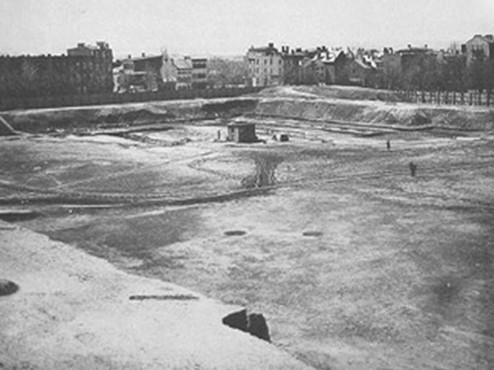
REVERSE | All exchanges are personal. There is no authority. No history. No canon. All information is neurotic, two-sided, and unfixed. Perception. Memory. Translation. Speech. Constant utterances. Understandings which involve more than mere word-recognition. Beyond titles. Listen for what is beyond words, beyond comprehension. Listen for tone, embedded experiences. Detect falseness like a sixth sense. There is no need for legislation. Sniff out the gestures. (Why pretend the printed word means more than what is said between people?) Jealousy and sympathy collide to produce conversation. Without prose, fiction, non-fiction, all forms are self-evident. Some things remain hidden. Some things come out.
Paper No. 2
Roundtable Discussion: Grace Weir, Jacinta Lynch, Mark O’Kelly, Patrick Murphy, Paul O’Neill, and Sarah Pierce. On Tuesday 21 October 2003, the following conversation took place in the Royal Hibernian Academy’s artist studio in Dublin. The participants are artists, curators, or both, who at sometime or another have lived and worked in Dublin. Pierce invited them to have an informal discussion. There was no audience present. Original back issues available. DOWNLOAD | Paper No. 2
Paper No. 1
Roundtable Discussion: Alan Phelan, Annie Fletcher, Brian Hand, Finola Jones, Mark Garry, Grant Watson, Vaari Claffey and Sarah Pierce. On Saturday 25 January 2003, the following conversation took place in Sarah Pierce’s studio in Broadstone, Dublin. The participants are artists, curators or both. They have all curated in Dublin, independently or within an institution. Pierce invited them to have an informal discussion. There was no audience present. Original back issues available. DOWNLOAD | Paper No. 1
